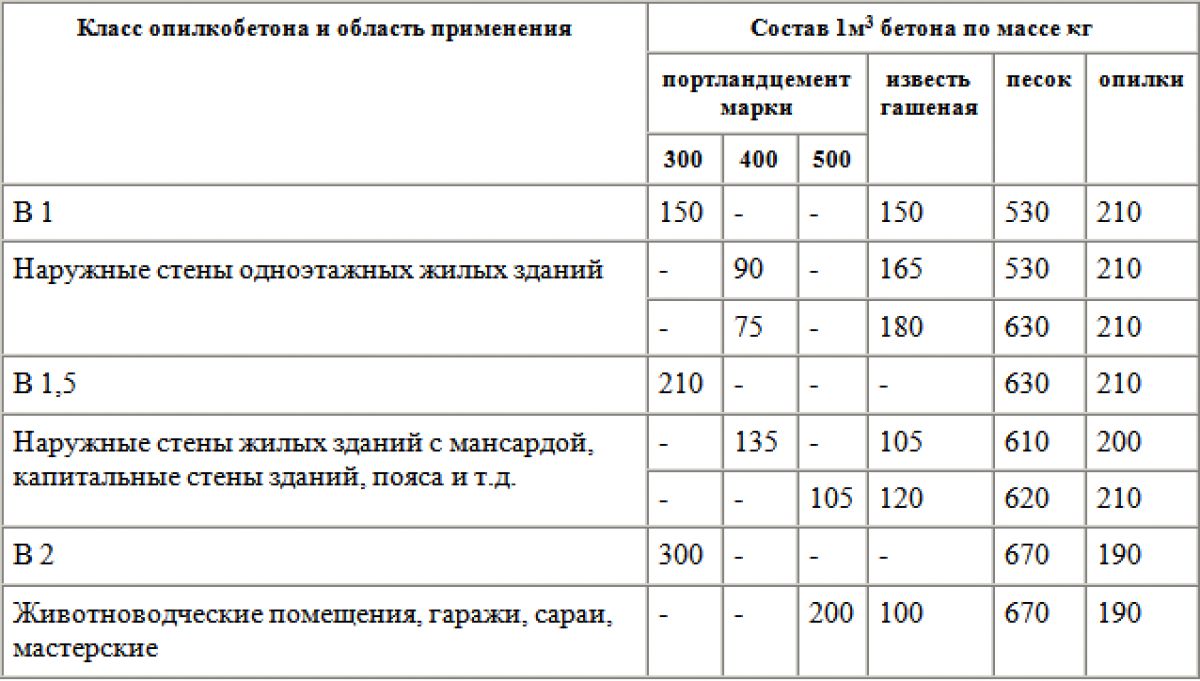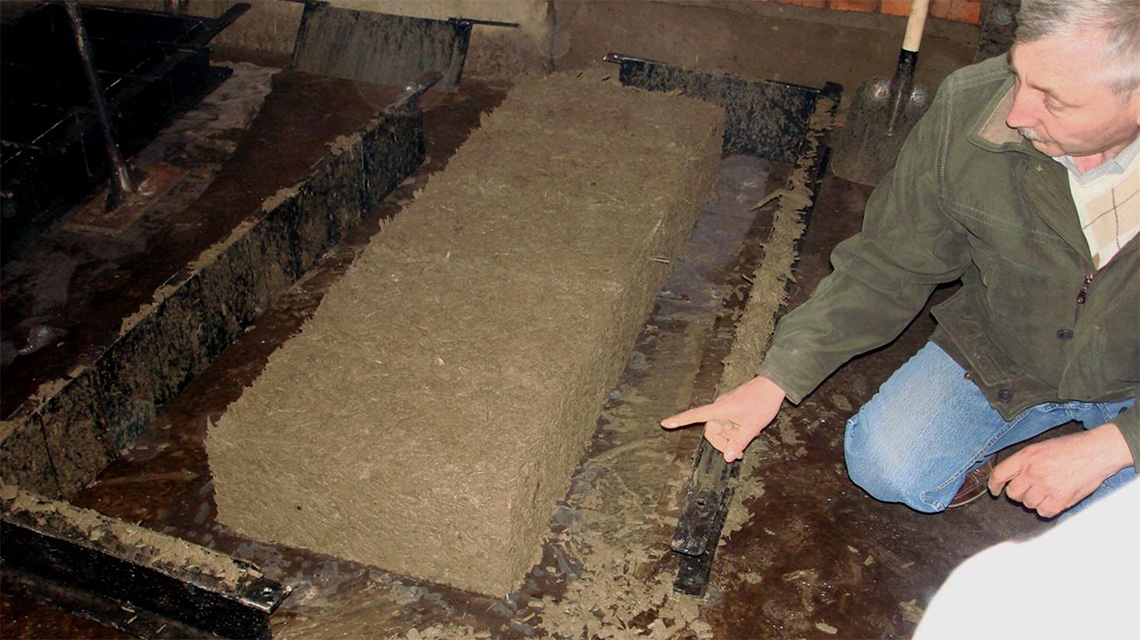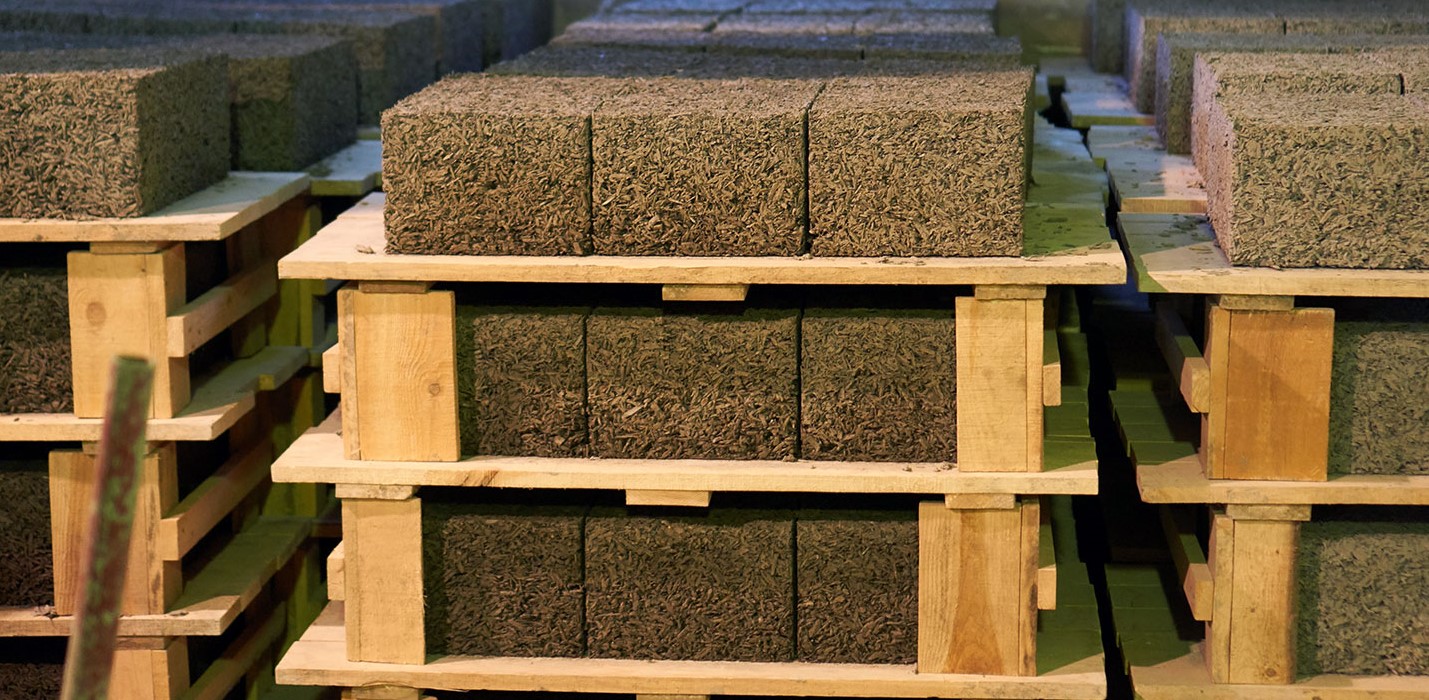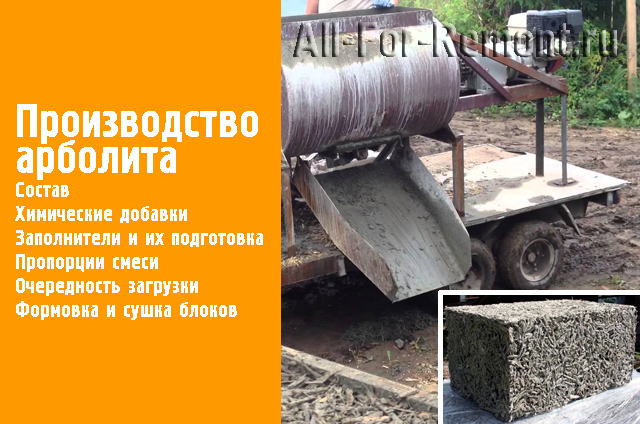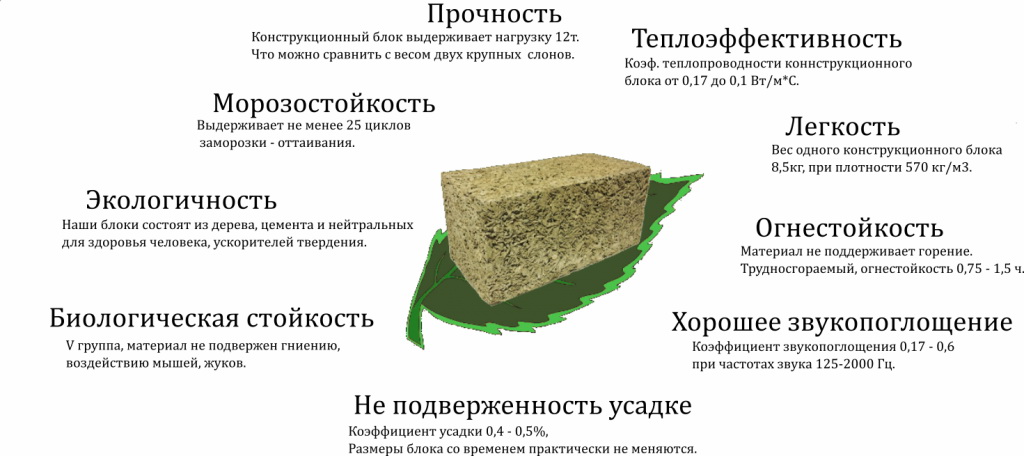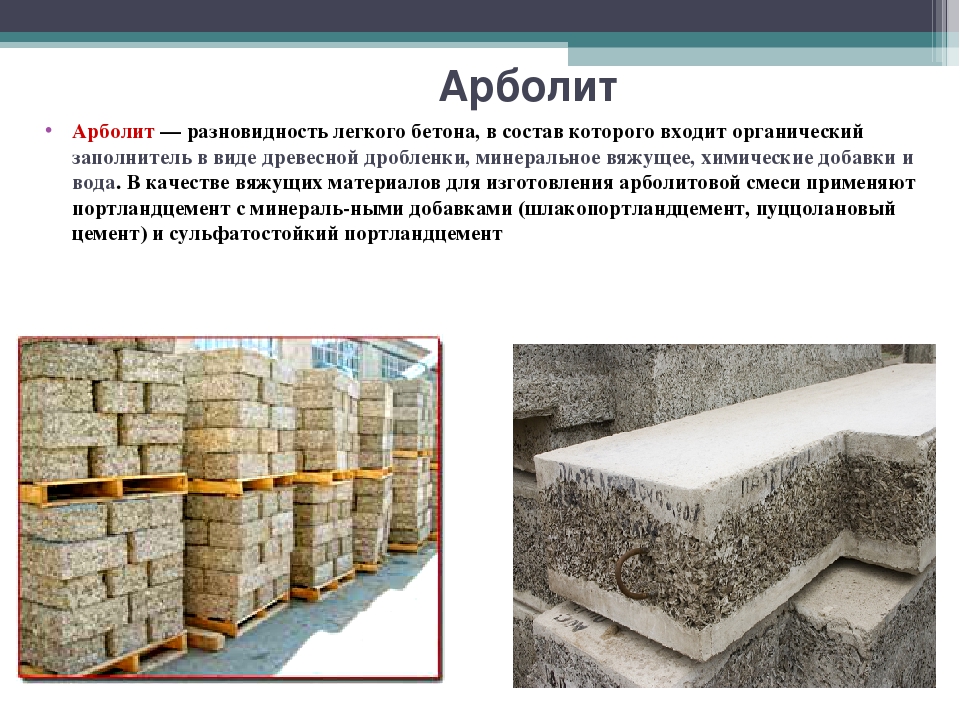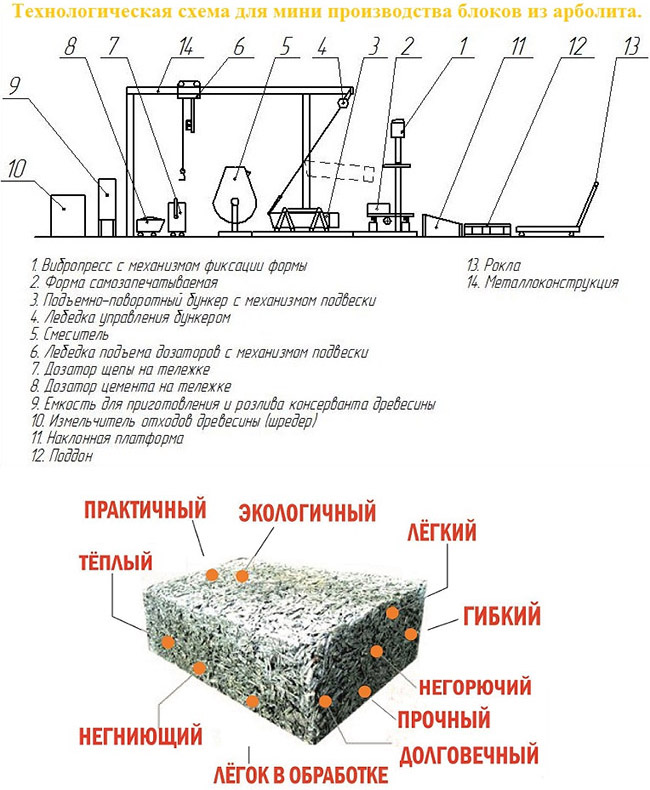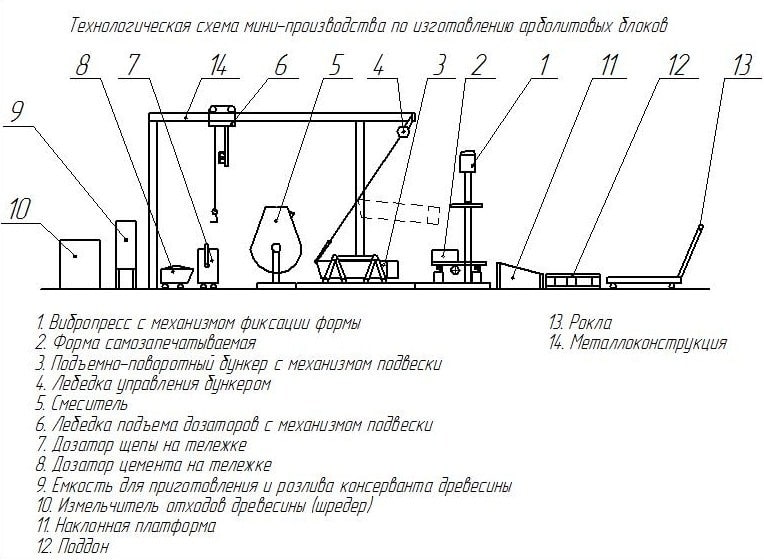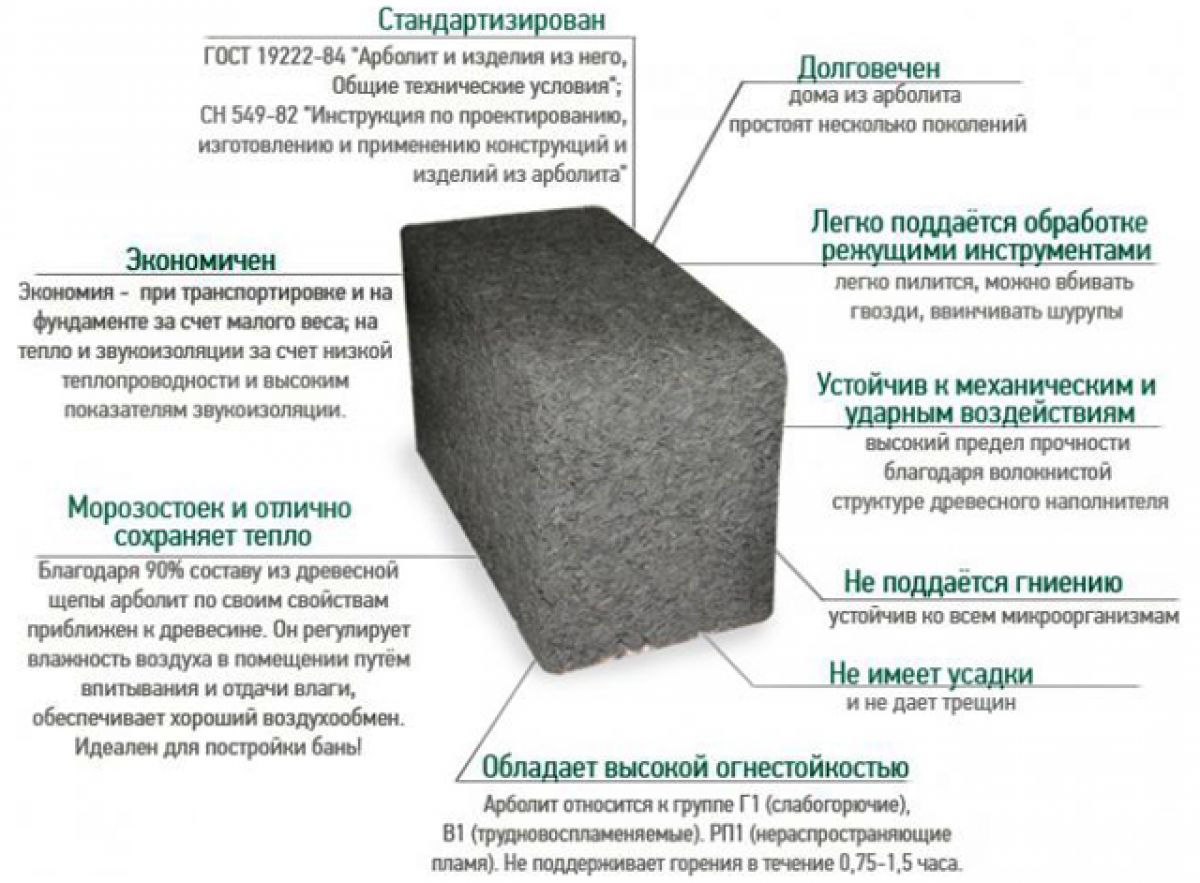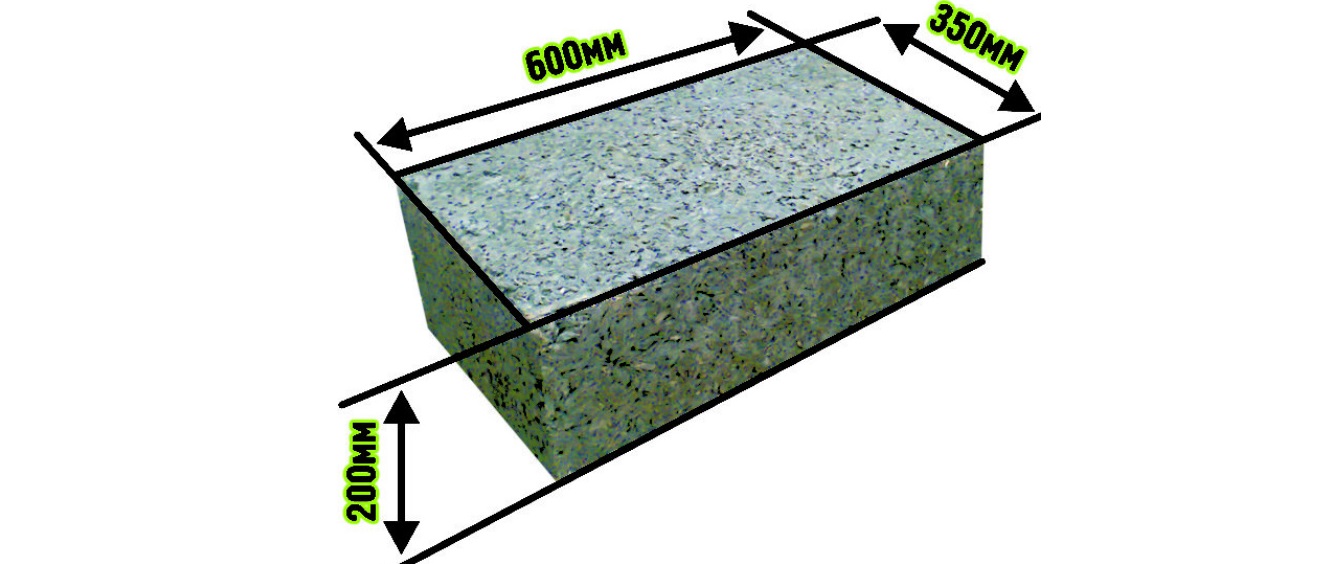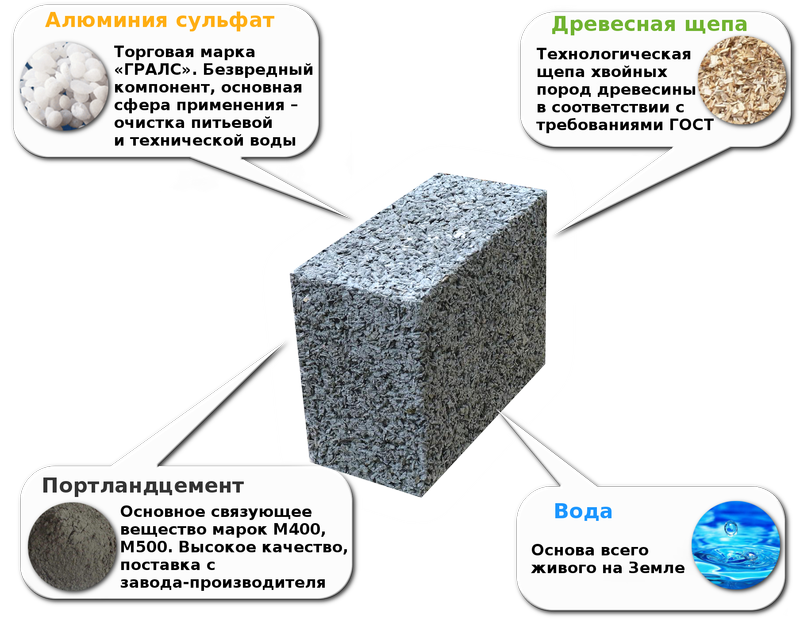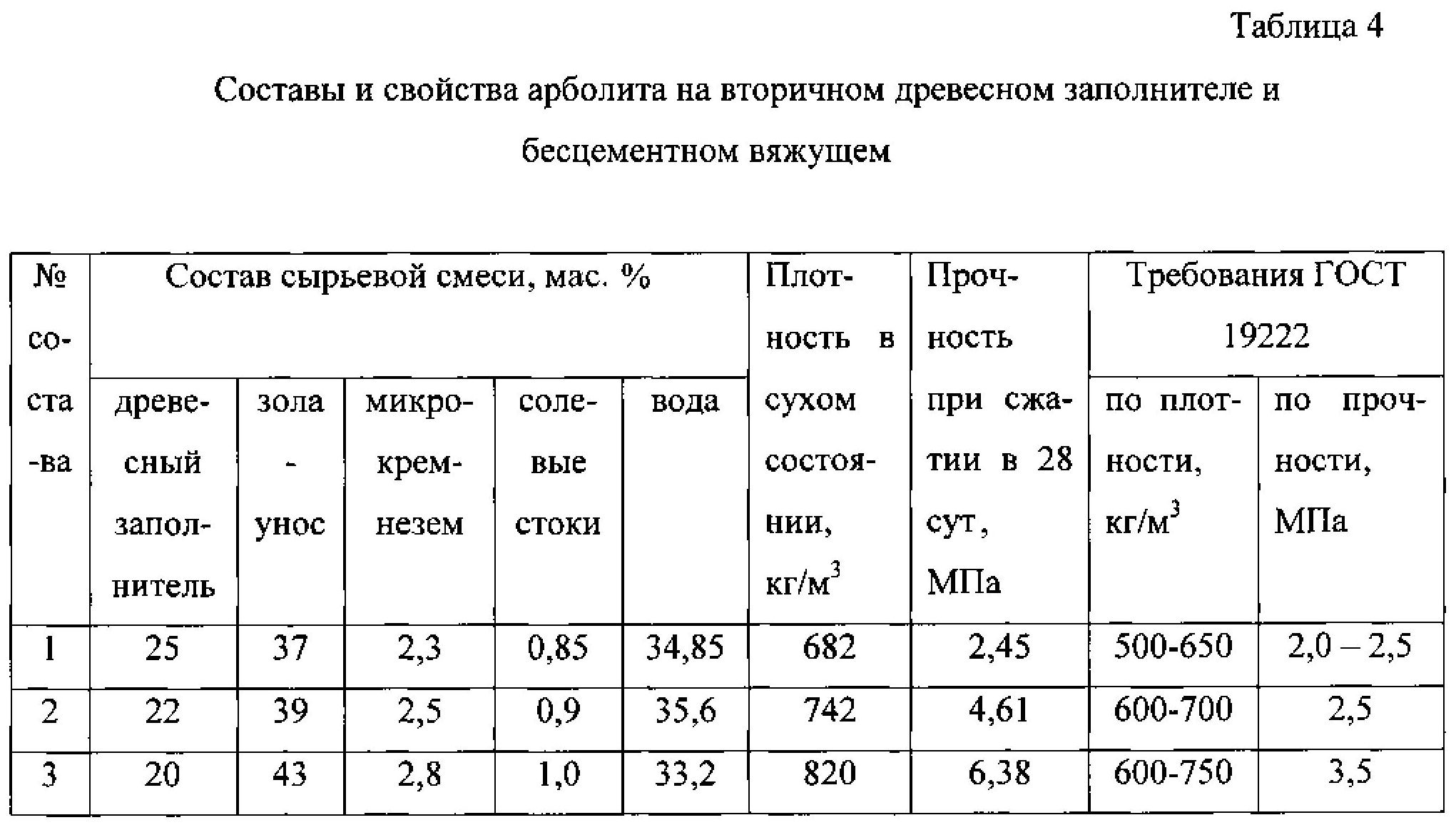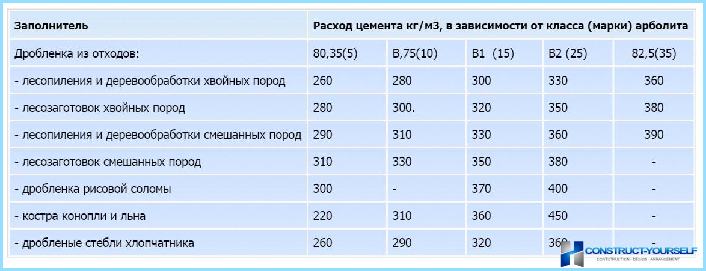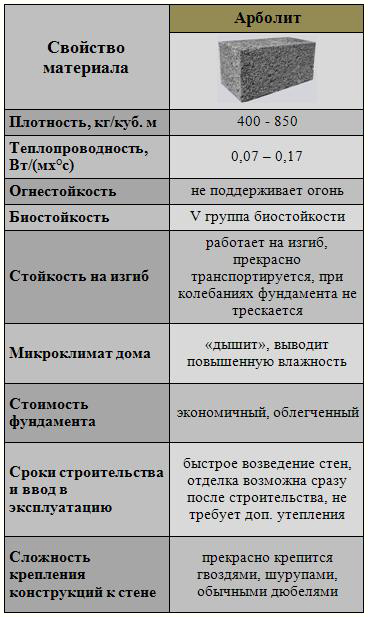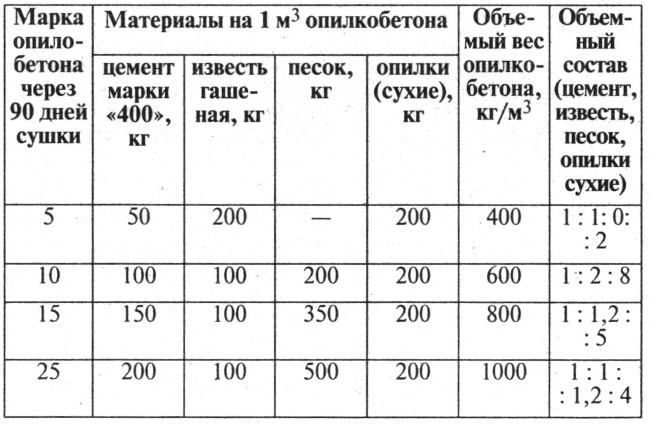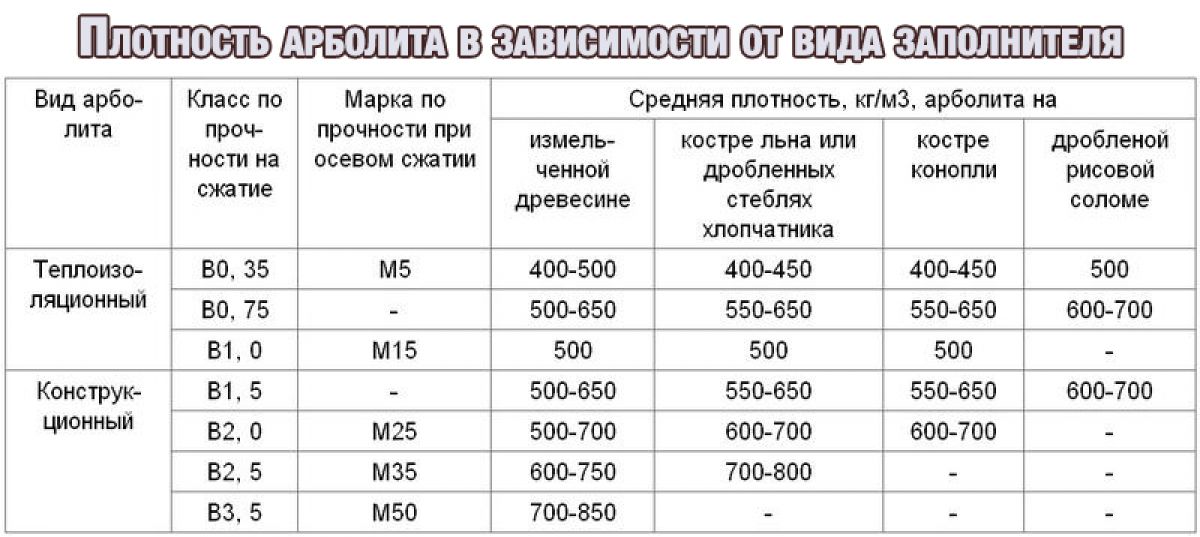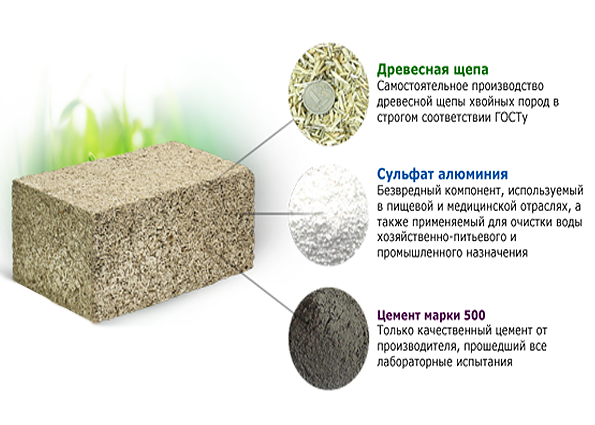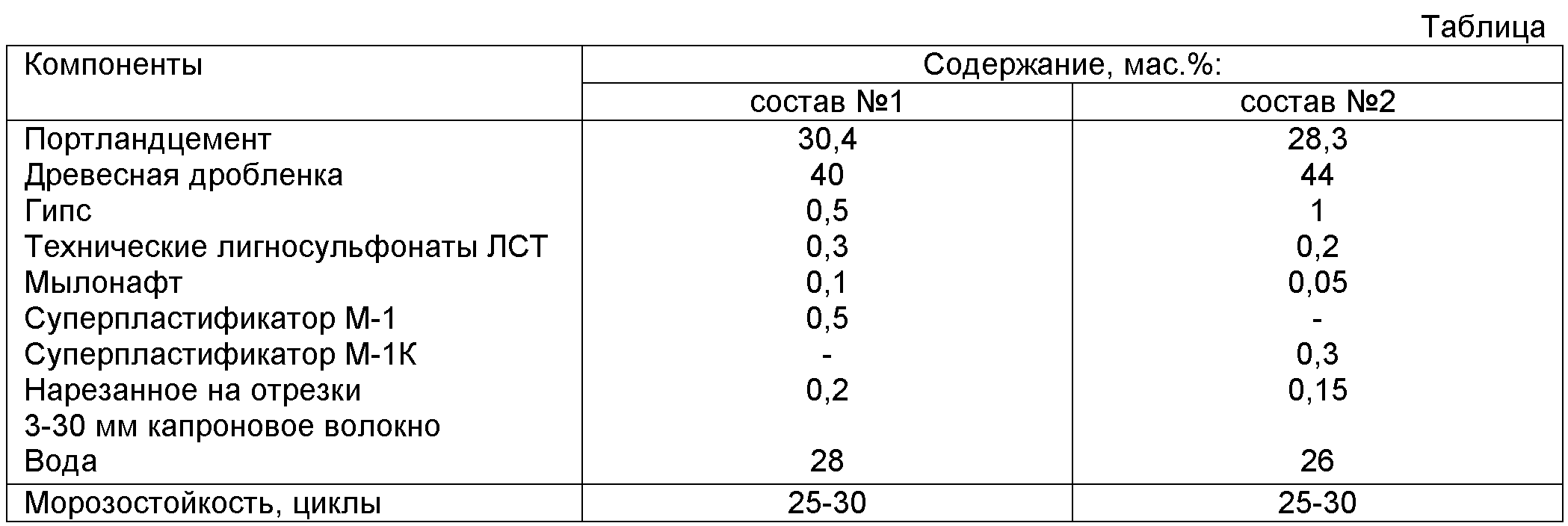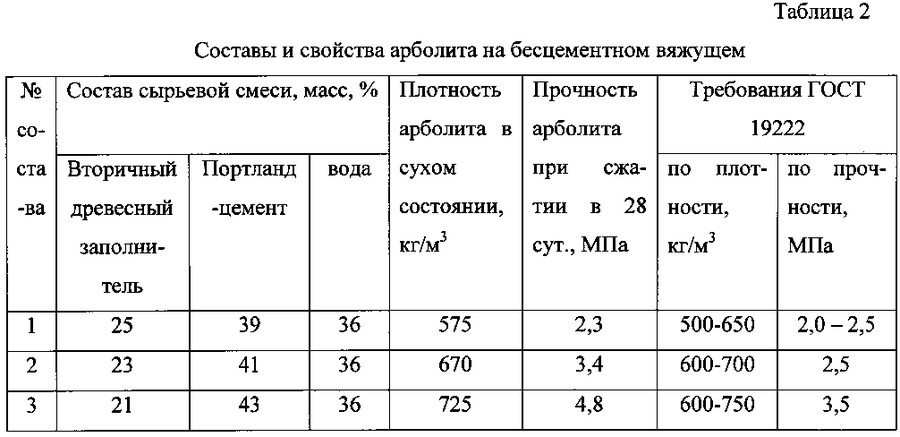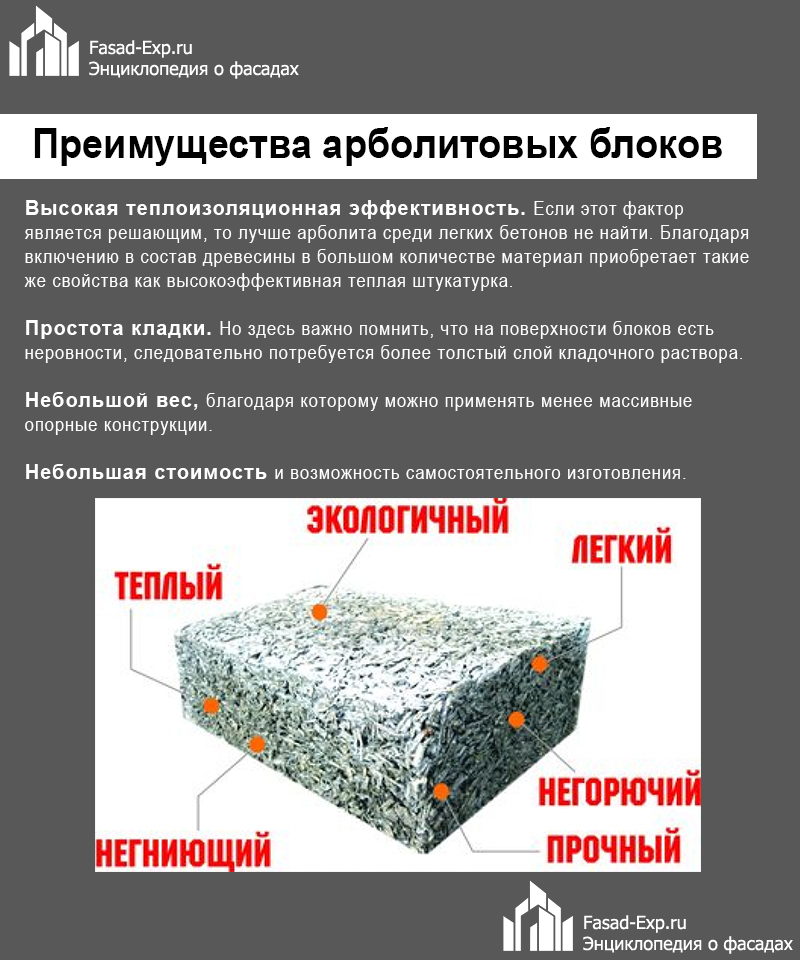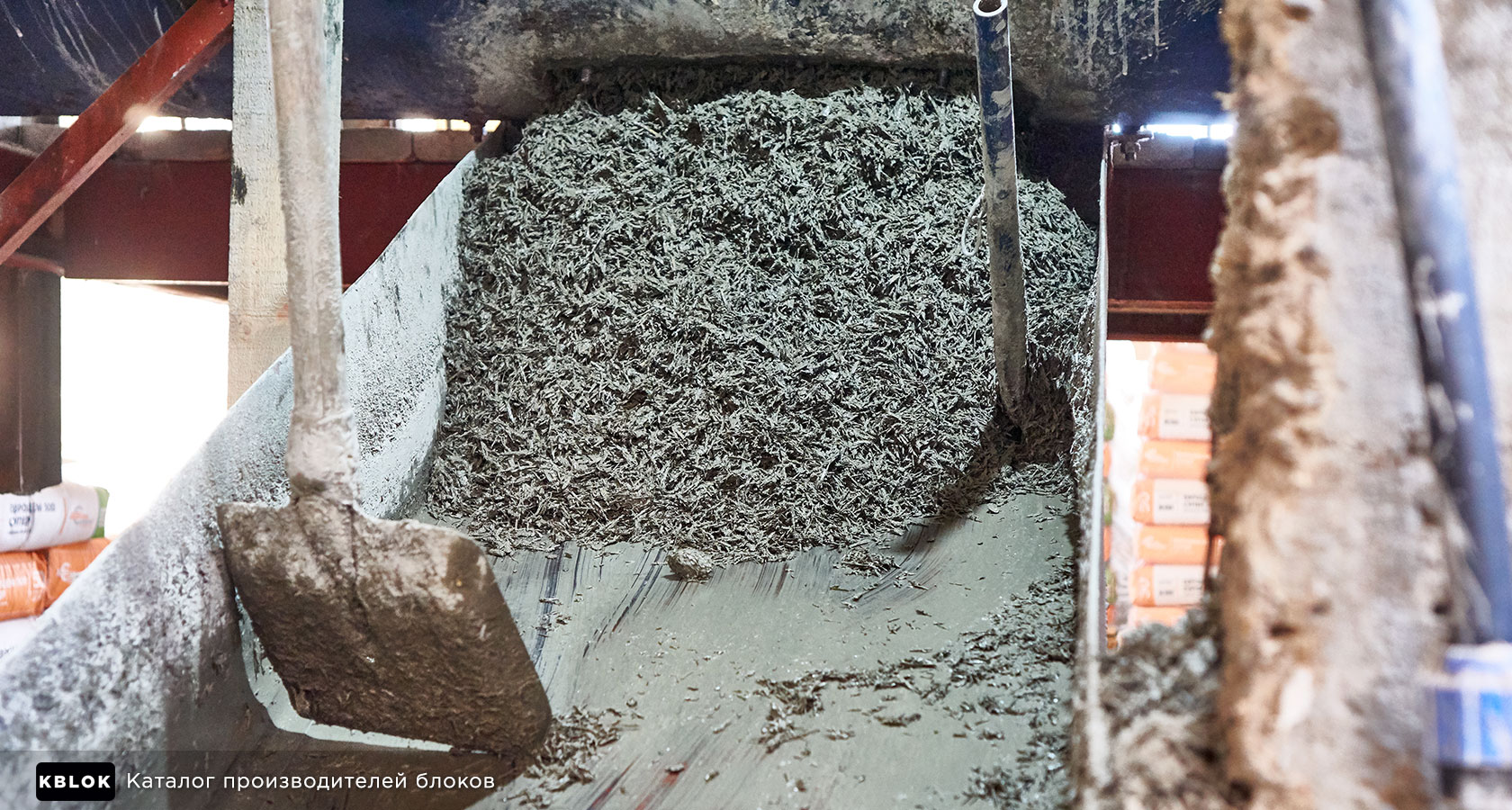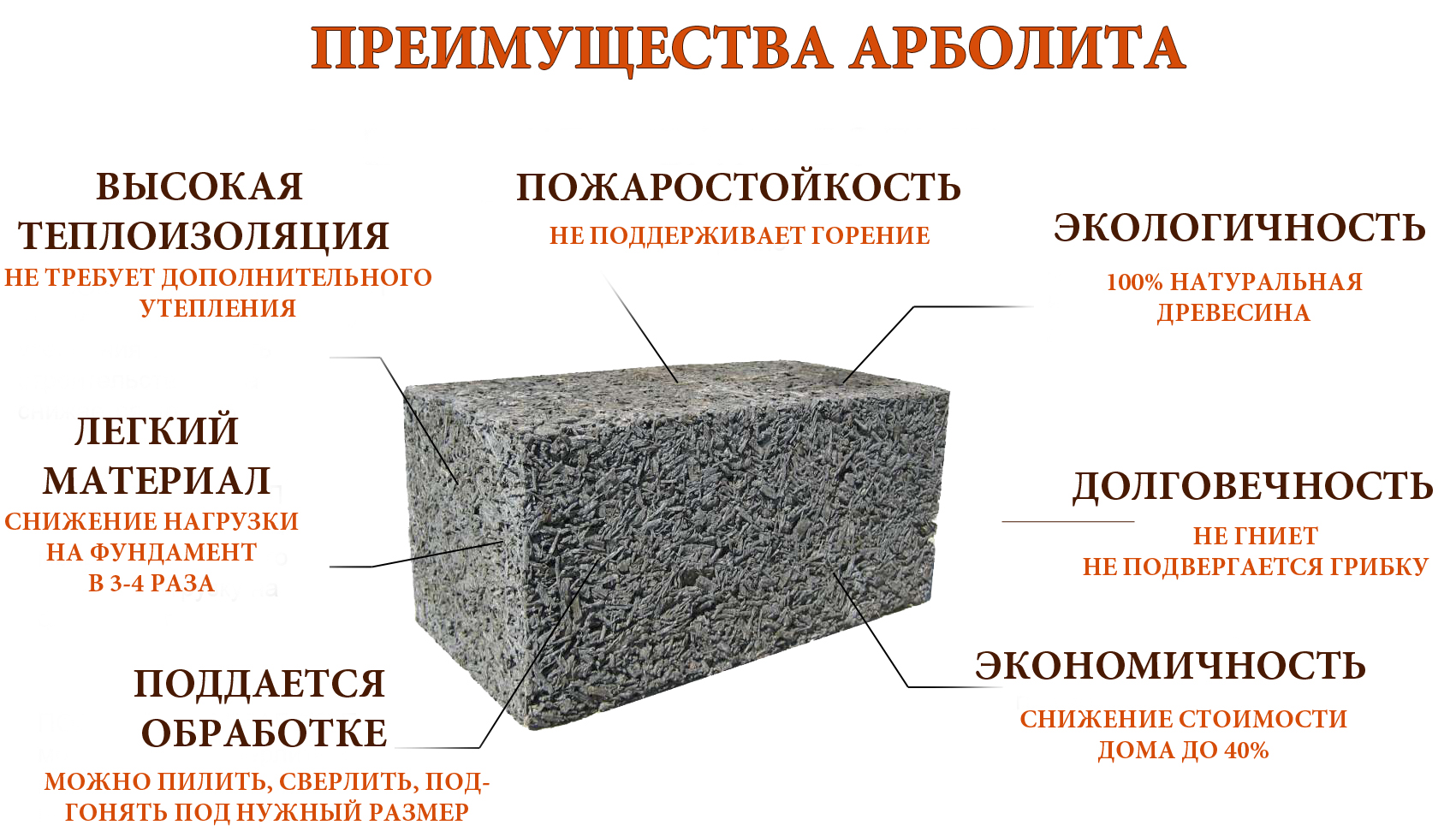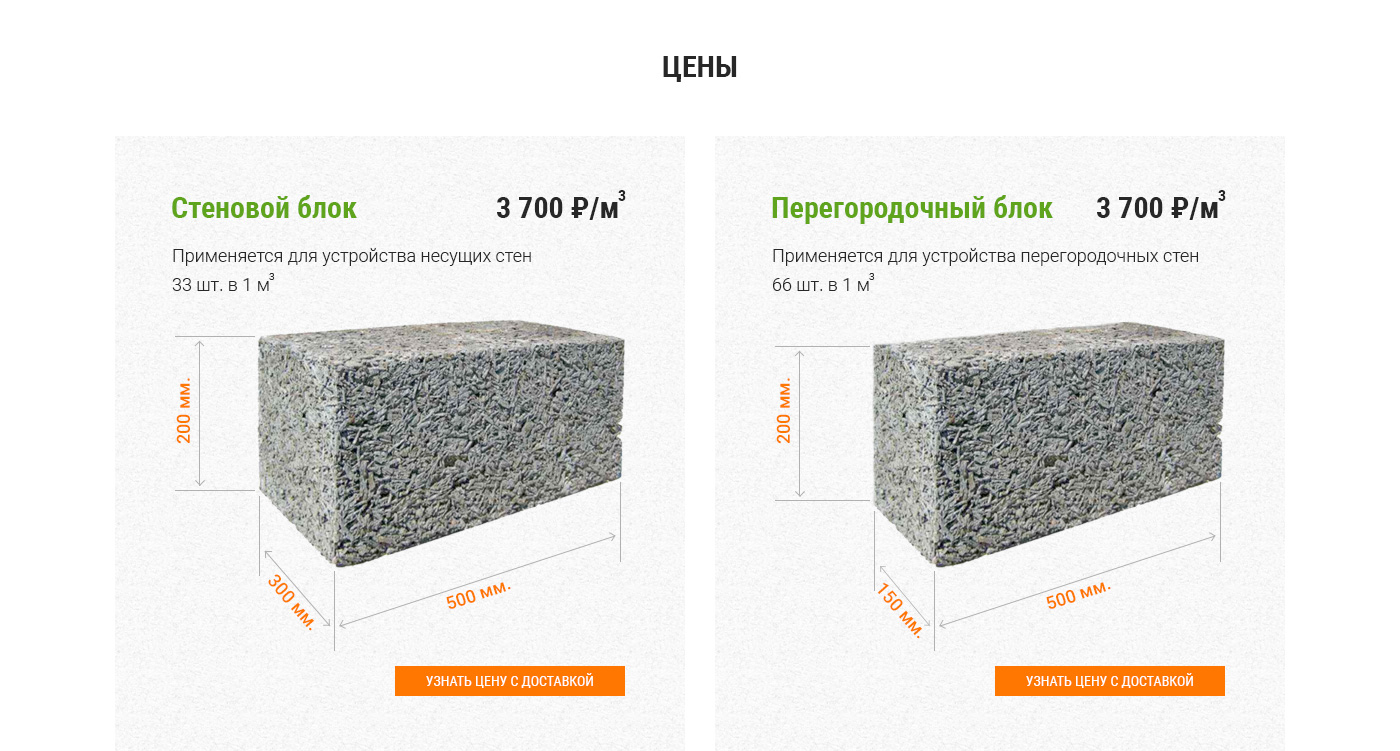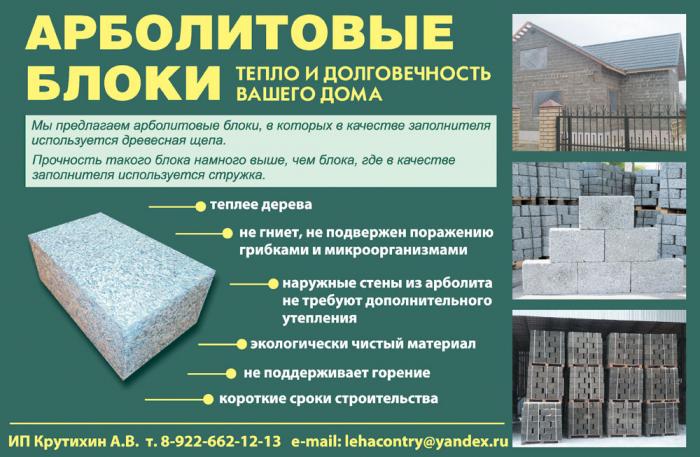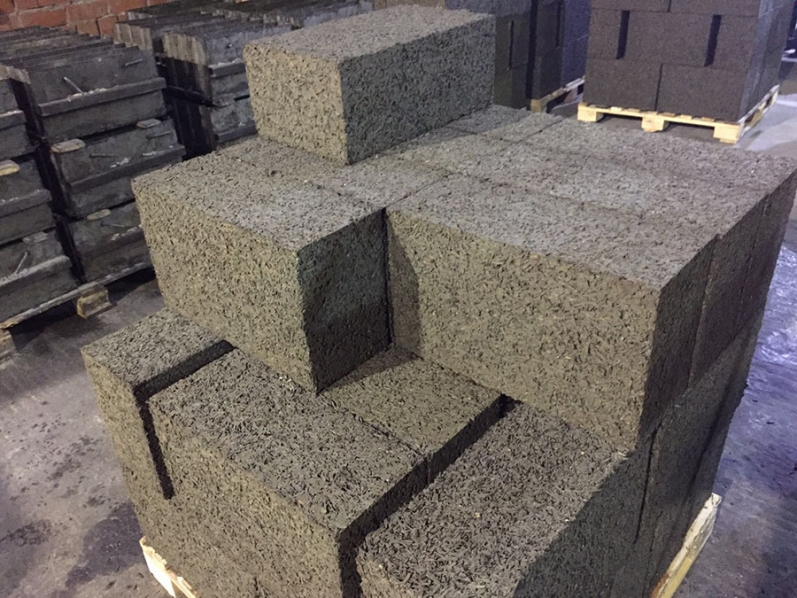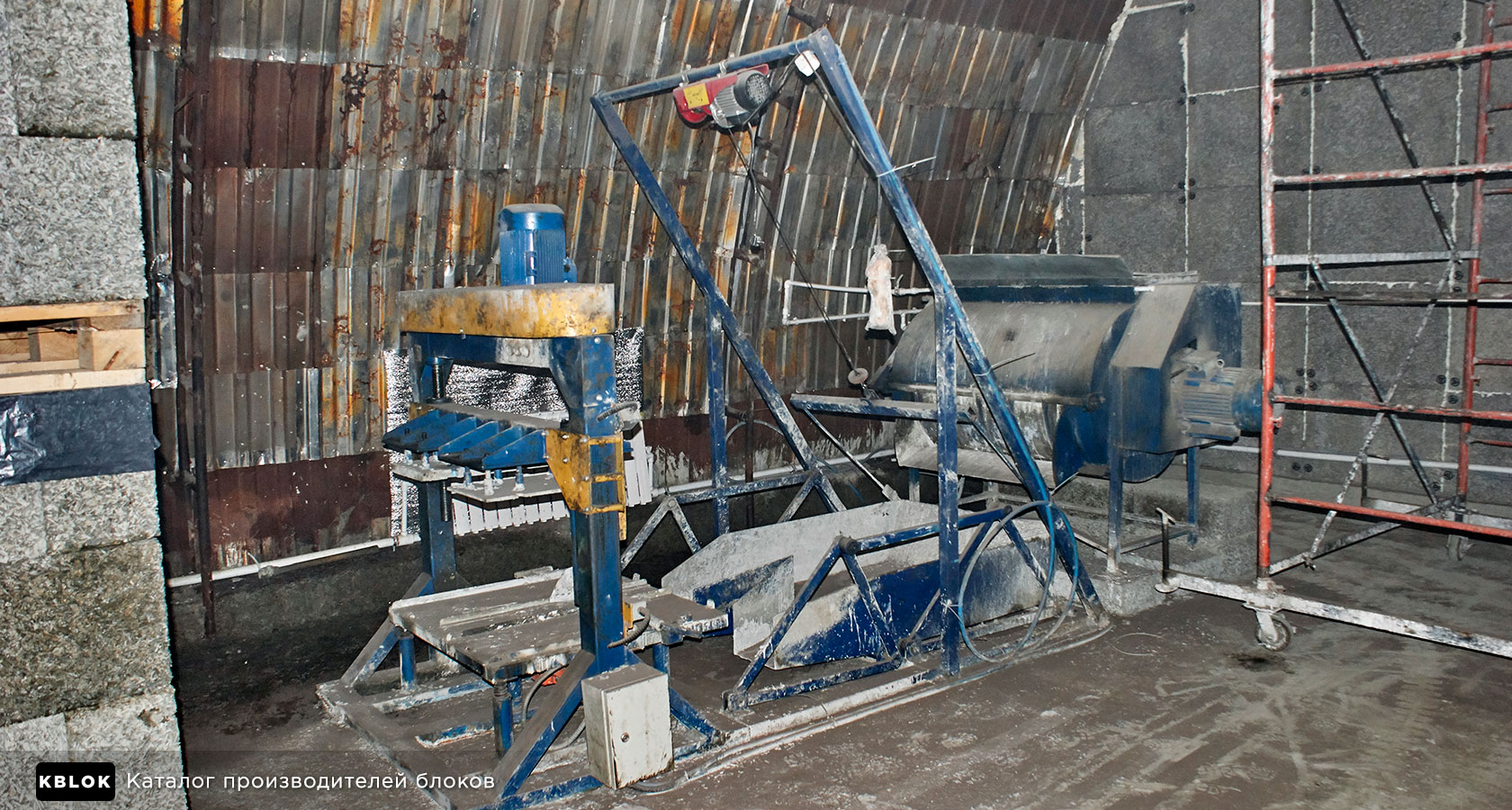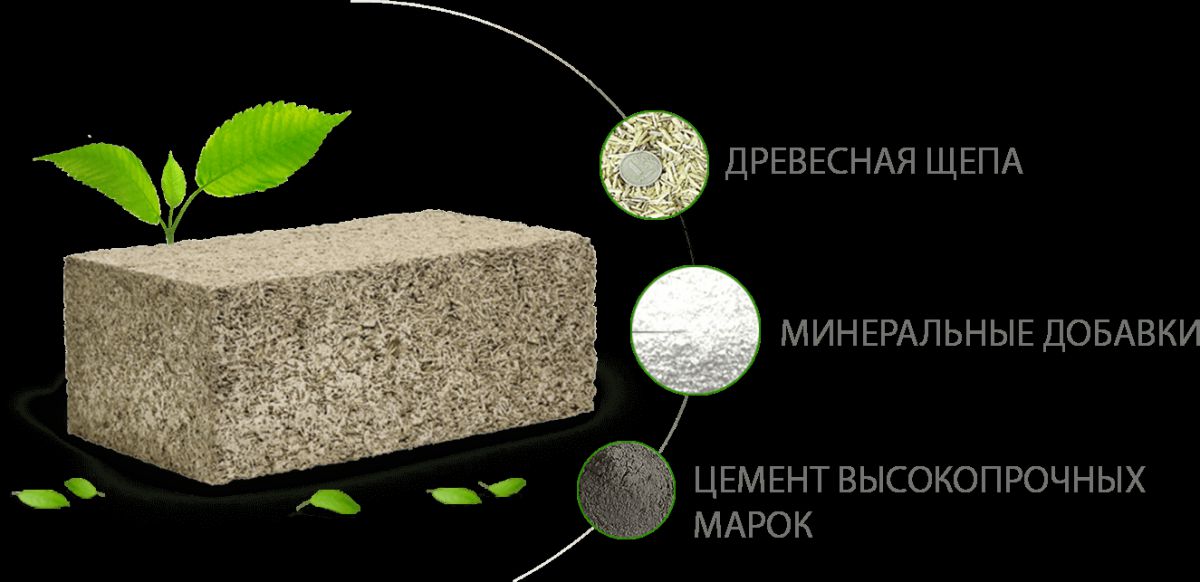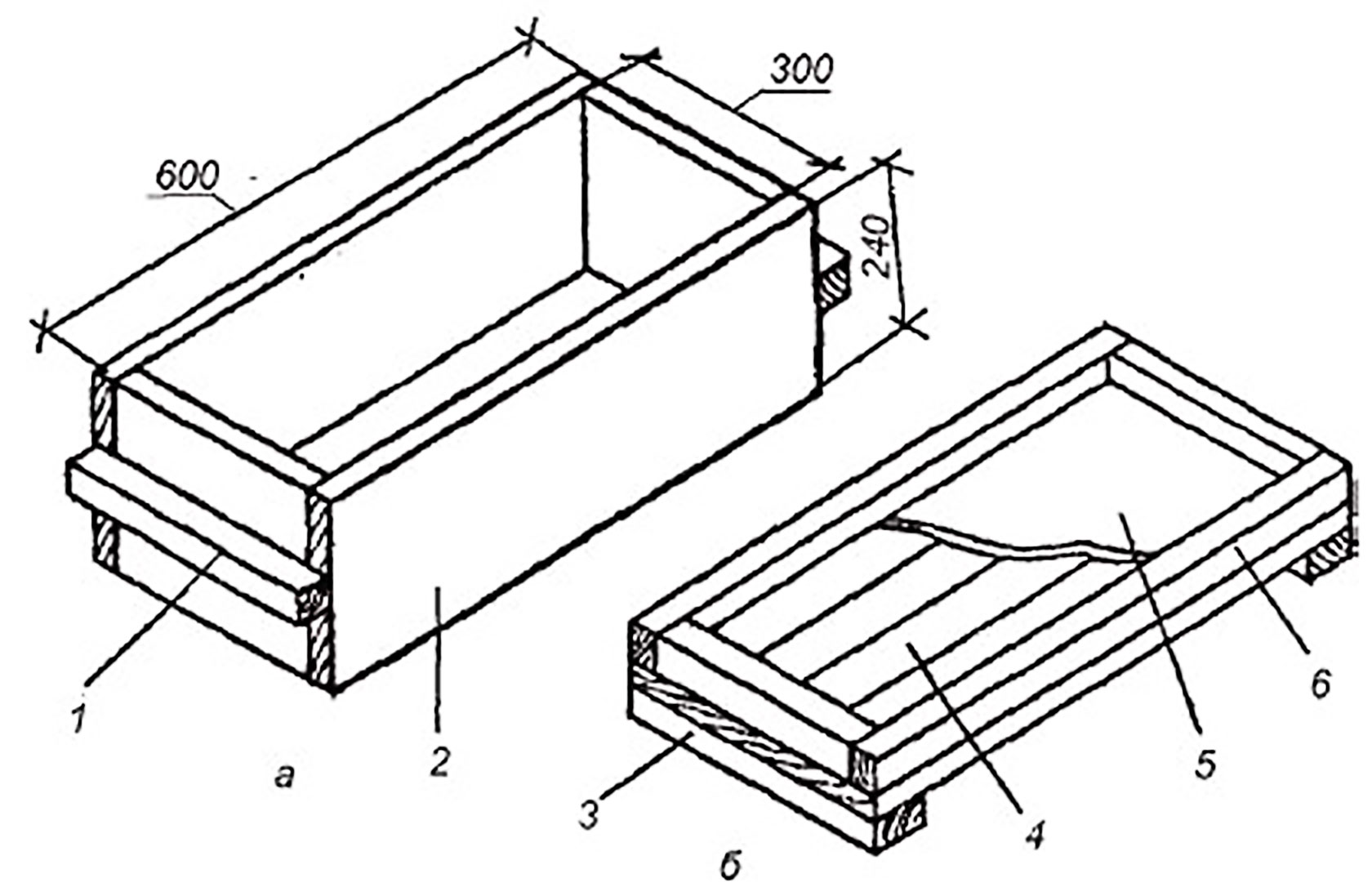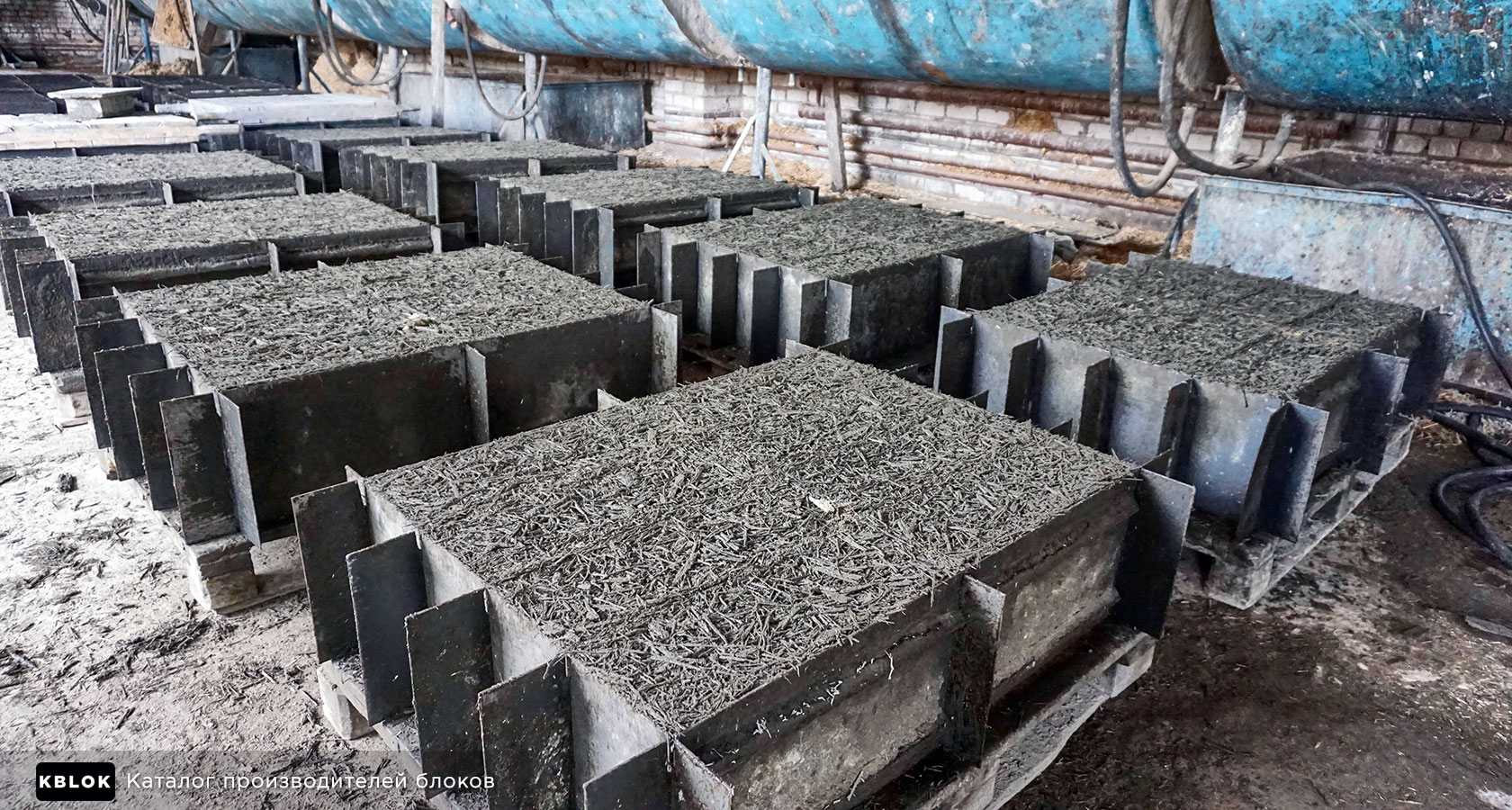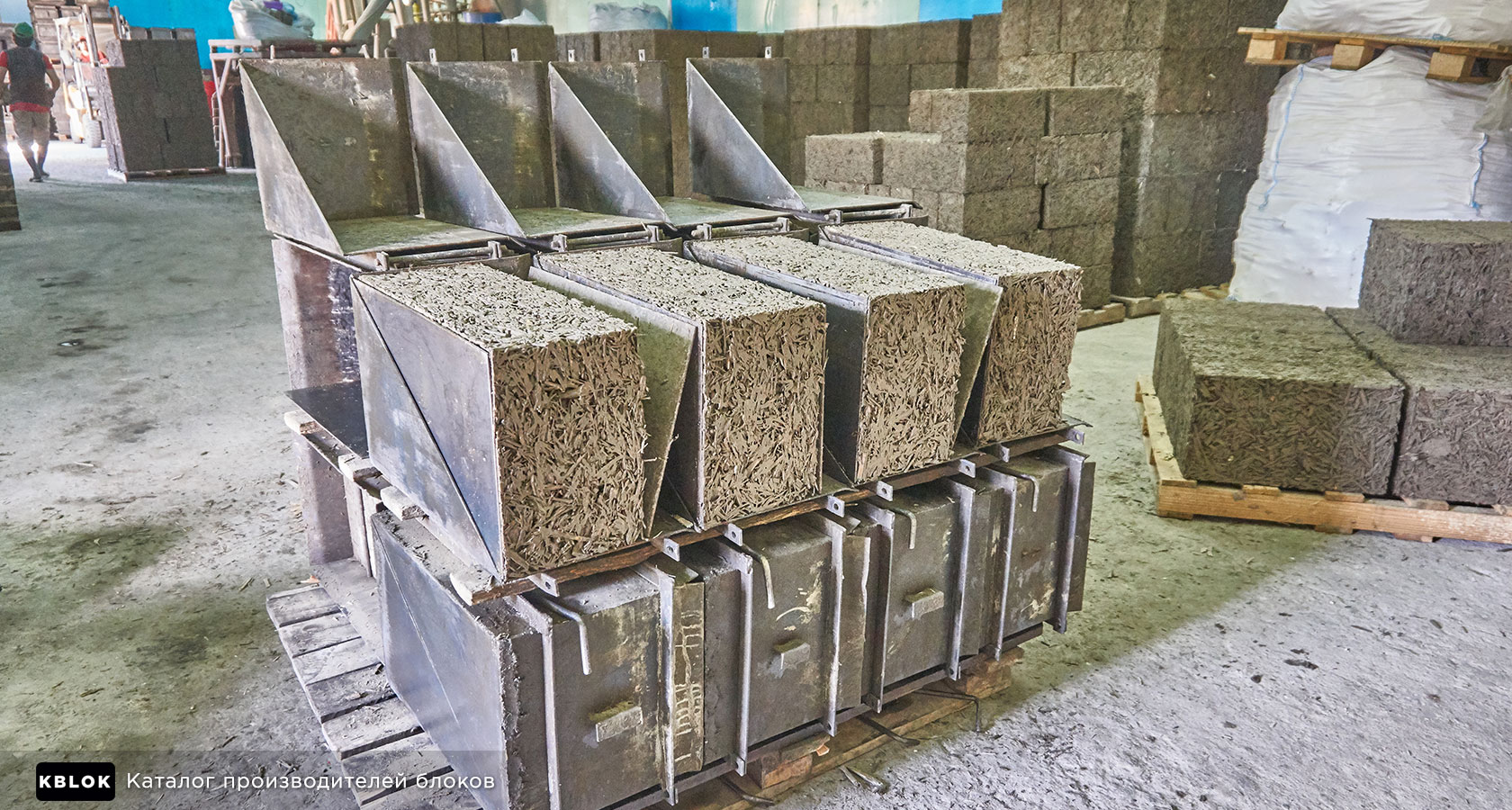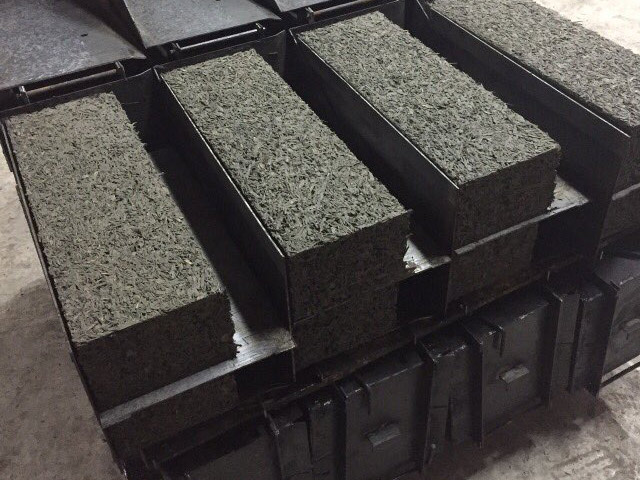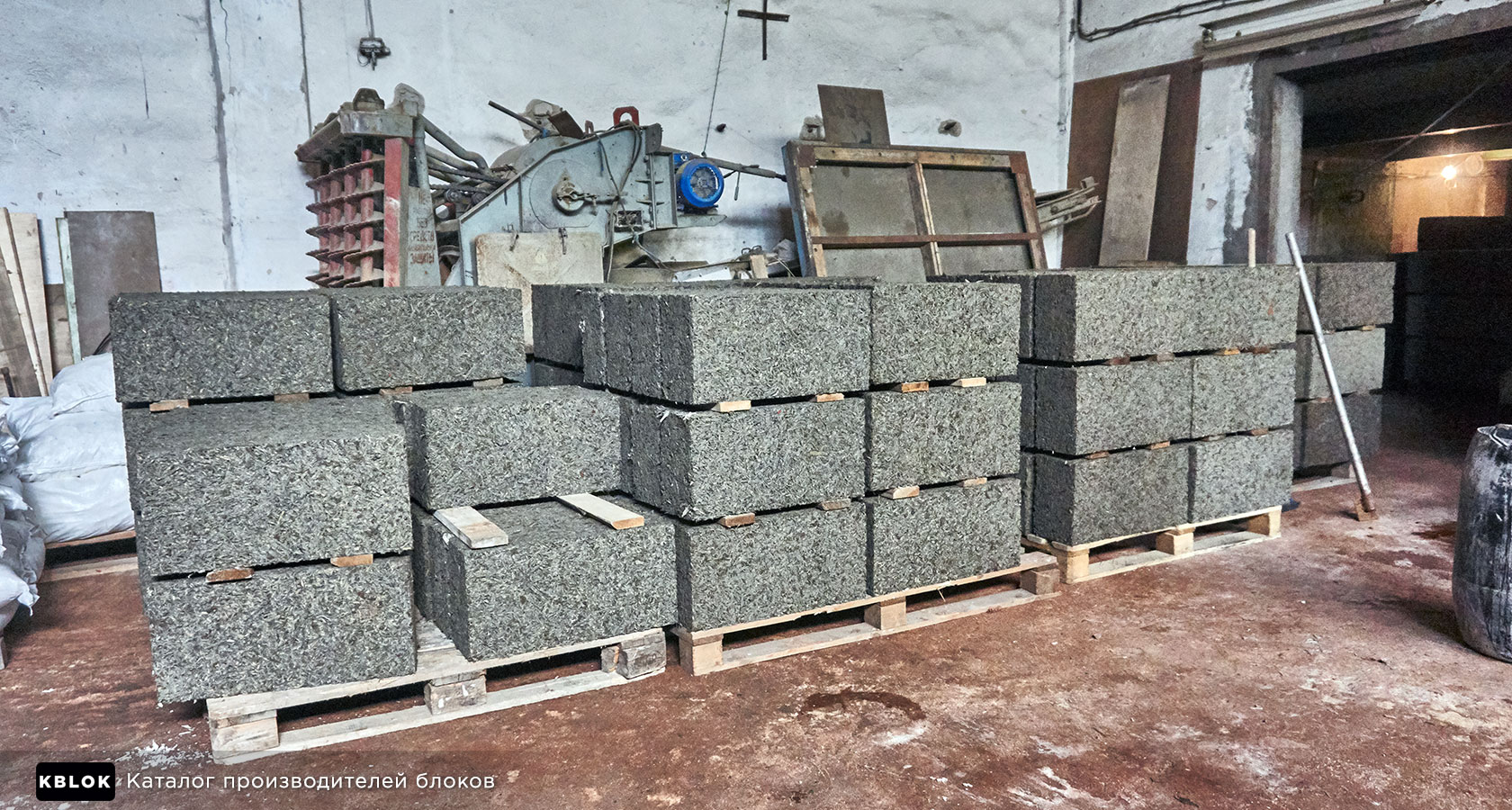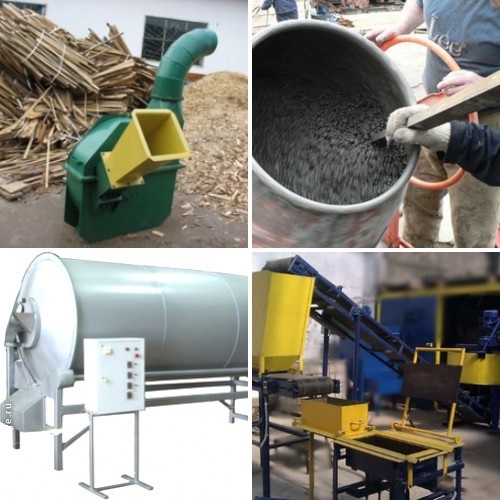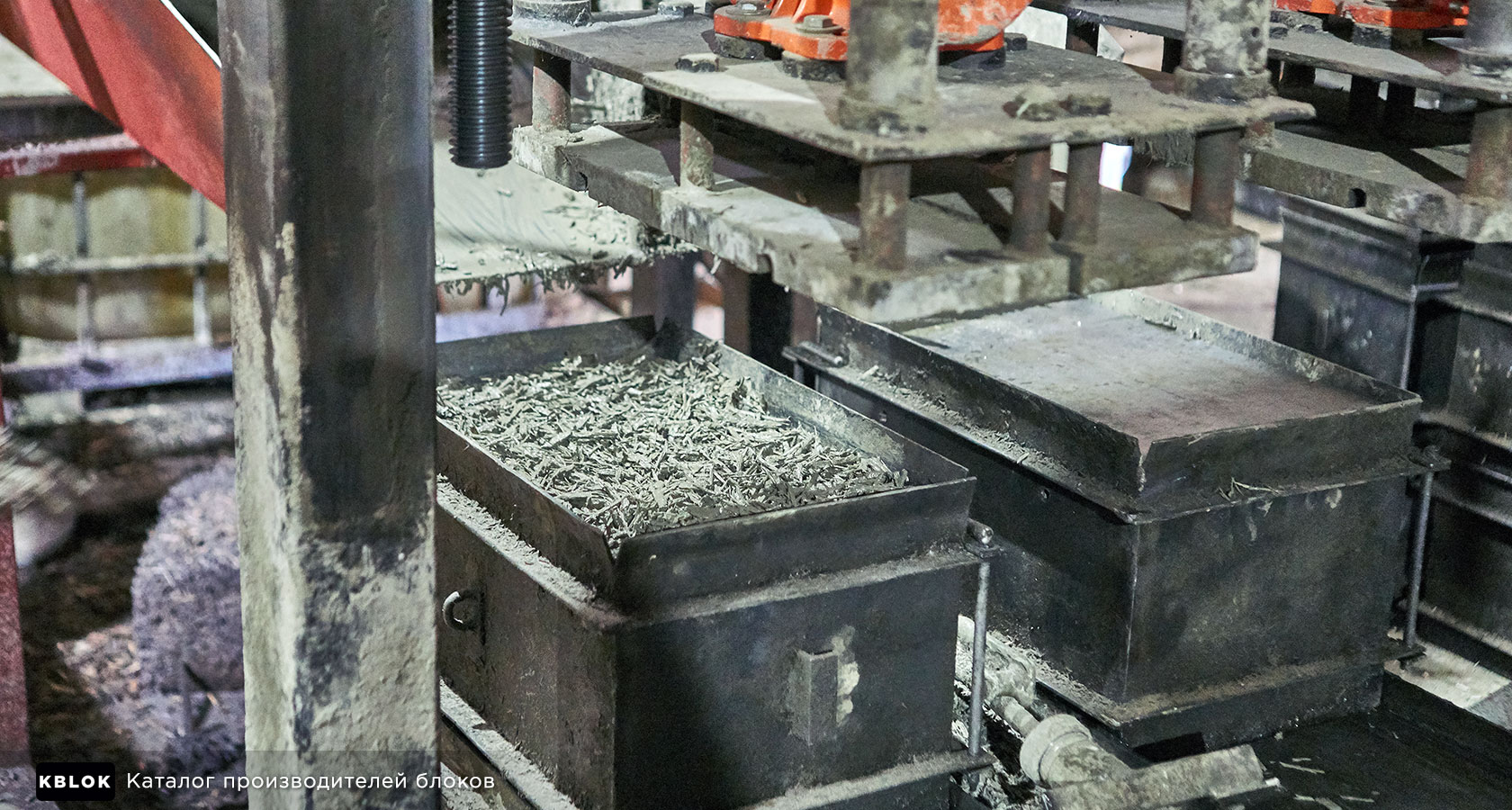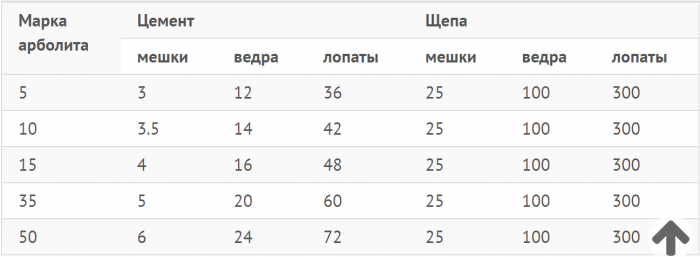How to make it yourself
For the manufacture of wood concrete, you will need wood chips, cement, water, mineral additives.
To prepare wood chips, you will need a special wood waste grinder - a shredder, for mixing a solution - a concrete mixer.
Tip: Gears can be rented.

There are many recipes for making wood concrete; when preparing a mixture, one of the most important conditions is preliminary drying and processing of wood chips. To prevent decay and increase the fire resistance of the material, the chips are pretreated with an antiseptic and a fire retardant, then dried. Mineral additives are added to the solution or the chips are processed, then dried.
Composition and proportions of the mixture
These indicators depend on the purpose of wood concrete (structural or heat-insulating), the desired grade of wood concrete, the moisture content of the chips, the grade of cement:
- for the preparation of 1 m3 of structural wood concrete of grade B 2.5, 320 kg of M400 cement, 190 kg of filler and 330 liters of water are taken;
- for the preparation of 1 m3 of heat-insulating wood concrete of grade B 0.35 take 280 kg of cement, 1170 kg of chips and 300 liters of water.
Important! The exact proportions of the mixture do not exist, since cement of the same brand may differ from different manufacturers, and chips do not have the same moisture content. Therefore, to determine the exact dosage of the components, several control batches may be required.
Mineral Supplement Ratio
Wood chips
It is advisable to use chips of coniferous trees, with the exception of larch, it is possible to use chips of deciduous trees. According to GOST, chips should have a size of no more than 25 × 5 × 10 mm, with a larger size, the strength characteristics of the material deteriorate, with a smaller size, the consumption of expensive cement increases and the thermal insulation qualities deteriorate.
Attention! Raw materials must be free of rot, mold, foreign particles, in winter - free of snow or ice.
To neutralize the sugars in the wood, which negatively affect the quality of cement, wood chips are dried in the sun for at least 3 months, constantly stirring (not in a heap!), Or treated with chemical components.
Chemical components
As chemical components used (per 1 m3 of the mixture) technical calcium chloride - 8 kg, or sodium water glass - 8 kg, or a mixture of aluminum sulfate with quicklime - 20 ... 25 kg.
In the case of using lime, 1 m3 of chips are soaked in lime milk with a composition of 2.2 kg of canned lime per 150-200 liters for 3-4 days with regular stirring, then squeezed out. Since this process is quite dangerous with chemical burns, calcium chloride or liquid glass is often used at the rate of 2-5% of the weight of cement.
Correction of the composition
If, during mixing, cement of a lower or higher grade is used than the recommended M 400, or too wet chips, then correction factors are applied to the percentage of the components:
- Cement M 300 - coefficient 1.05;
- cement M500 - coefficient 0.96;
- cement M600 - coefficient 0.93;
- with a moisture content of wood chips of 20% - coefficient 1.2; in this case, the amount of water is reduced by its content in the wood.
To determine the exact amount of chemical additives, test mixes are made: if whitish streaks appear on the dried sample with the introduction of 5% additives, the amount of the component can be reduced.
This video shows what can be caused by non-observance of the proportions:
Kneading process
For mixing wood concrete, you can use a tin tank or a bath, but it is easier to mix the components in a mortar mixer. Prepared chips are mixed with dry cement and mineral additive, then water is poured in and kneaded until smooth. The mixture should be moderately moist, but the solution should not drain.
The mixture is fed into the prepared formwork, pouring in layers no more than 30 cm high, then compacted.
What is a finished wood concrete block
Chip blocks are a type of lightweight concrete.They are distinguished by a large-pore structure and a filler, which is used as wood shavings. Standard products have the shape of a rectangular parallelepiped with dimensions of 0.5x0.3x0.2 m. Block products with other dimensions corresponding to the dimensions of the molding box are also produced. Along with blocks, arbolite products are produced in the form of slabs, to increase the strength of which reinforcement is performed.
Wood concrete includes the following components:
- wood filler in the form of chips of certain sizes;
- special active additives with chemical components;
- binder based on Portland cement M400;
- water, providing plasticity of wood concrete solutions.
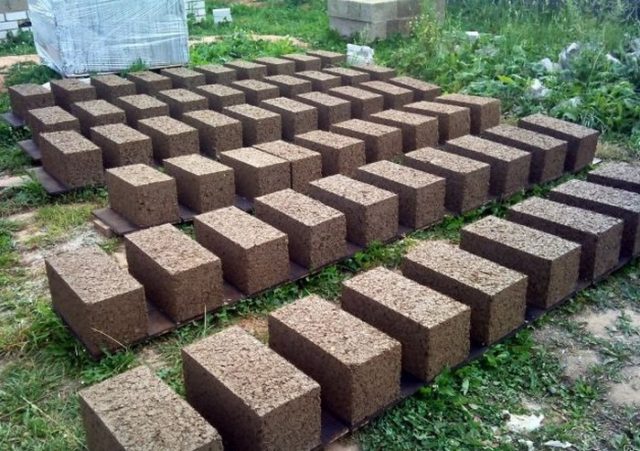 Chip blocks are characterized by a large pore structure
Chip blocks are characterized by a large pore structure
One of the conditions for obtaining quality material is uniform mixing of ingredients. First, the mass of each type of feedstock is determined, depending on the required amount of solution. Then the weighed components are mixed and the next stage is performed - filling the formwork boxes with mortar. To ensure an increased density of blocks, the mixture is compacted in molds. Developers manufacturing expanded clay blocks with their own hands, it is easy to master this method of wood concrete production.
From wood concrete blocks build capital walls and erect internal partitions in low-rise buildings:
- residential buildings;
- economic facilities;
- industrial buildings.
Arbolite is classified into the following types:
- material with a density of up to 500 kg / m3, used for insulation of various types of building structures;
- structural products with a specific gravity of 500-800 kg / m3, which are used for the construction of load-bearing walls.
The use of wood filler and the coarse-celled structure of the arbolite massif do not allow the use of the material under heavy loads. You should make sure of the quality of the material when purchasing wood concrete for the construction of a private house. High-quality raw materials are not always used and the working mixture is saturated with liquid glass, which reduces hygroscopicity.
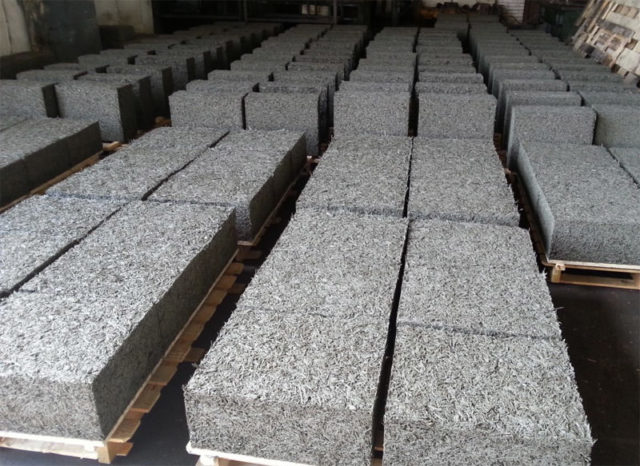 For the construction of a private house, you should make sure of the quality of the material
For the construction of a private house, you should make sure of the quality of the material
Building blocks made of wood concrete - the advantages and disadvantages of the material
Arbolit is gradually gaining popularity in the construction industry due to its serious advantages:
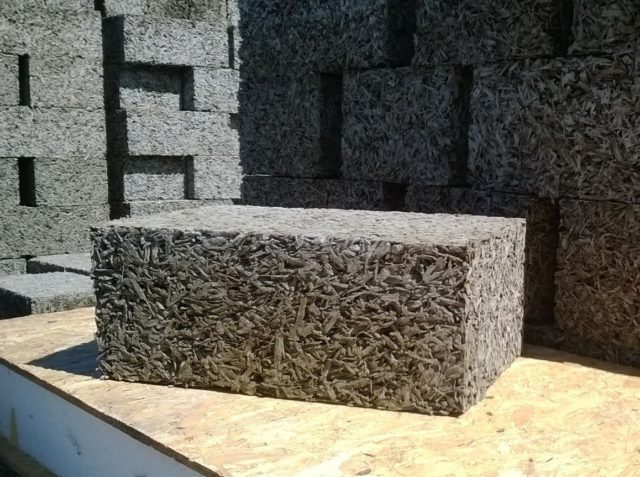 Arbolite is superior to traditionally used materials in terms of noise absorption
Arbolite is superior to traditionally used materials in terms of noise absorption
- reduced coefficient of thermal conductivity. In buildings constructed from wood concrete blocks, a temperature favorable for living quarters is maintained throughout the year. In addition, due to the reduced thermal conductivity, heating costs are reduced;
- sufficient safety margin. With a compression force of 5 MPa and a bending load of 1 MPa, the material does not fail. Due to the strength of the material, wood concrete products gradually restore their shape and original dimensions;
- deep freeze resistance. Manufacturers of wood concrete blocks and slabs guarantee the frost resistance of products. Tests confirm the retention of material performance after 40-60 cycles of intense cooling followed by sharp settling;
- the ability to reduce the level of noise exposure. The noise-insulating characteristics of wood chips used as a filler make it possible to create favorable conditions for those living in the room by absorbing external noise;
- reduced mass with increased volume. Using lightweight and voluminous wood concrete blocks, it is easy to quickly build the main walls of the house. The reduced mass of block material can significantly reduce the load on the foundation;
- harmless to health and the environment. The manufacturing technology of wood concrete products provides for the use of environmentally friendly raw materials.The absence of harmful emissions from wood concrete confirms the harmlessness of the material to others;
- ease of use. Arbolite is easy to cut into workpieces of the required size using an available tool. Problem situations when cutting the material and forming channels in it are excluded. In addition, no reinforcing mesh is required for wood concrete plaster;
- maintaining the original dimensions under load. Due to the low shrinkage of wood concrete blocks, not exceeding 0.6%, the likelihood of cracking on the walls of the building is reduced. The dimensions of the block material are preserved after removal from the mold and drying;
- affordable price. The low cost of the material is ensured by the use of cheap waste that accumulates at woodworking enterprises in the process of manufacturing various products;
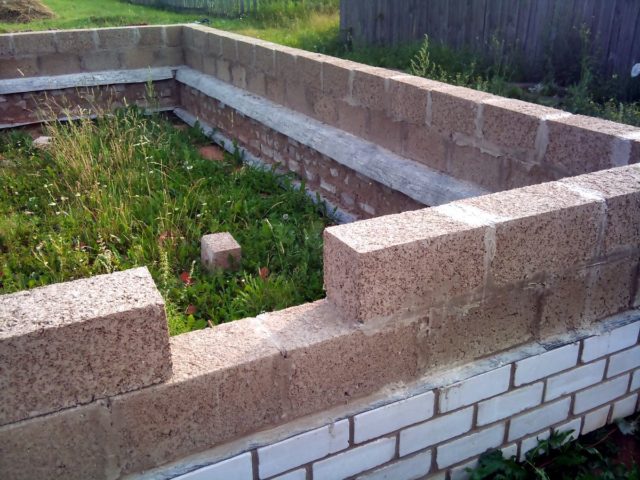 Arbolite is harmless to health and the environment
Arbolite is harmless to health and the environment
durability. Despite the fact that wood concrete has recently gained popularity in the construction market, it is a building material with a long service life. The safe operation of wood concrete structures is guaranteed for up to half a century.
So, the weaknesses of wood concrete:
- instability of product dimensions. Increased dimensional tolerances are associated with the use of molds by different manufacturers, which differ in size. To avoid the increased consumption of the plaster composition associated with dimensional deviations, the purchase of blocks from one supplier allows;
- irreversible changes in the structure of wood concrete during intense heating. And although an open fire does not cause a fire in wood concrete products, due to the high temperature associated with sharp heating, the chips smolder. This significantly reduces the strength of the material;
- tendency to absorb moisture. Due to the increased hygroscopicity of wood concrete, accelerated moisture saturation of unprotected walls occurs. The surface of the material requires mandatory plastering from the outside and inside of the building. Waterproofing protection of the foundation is also required, with which the wood concrete blocks are in contact.
Other disadvantages include:
- the possibility of the development of microorganisms due to the reduced concentration of lime;
- the need for additional insulation of wood concrete, which is easily blown through;
- characteristic odor associated with the introduction of chemical reagents into the material;
- damageability of blocks by various rodents showing interest in it.
Having decided to make wood concrete slabs with your own hands for building a house, familiarize yourself with the advantages of the material and carefully analyze the shortcomings.
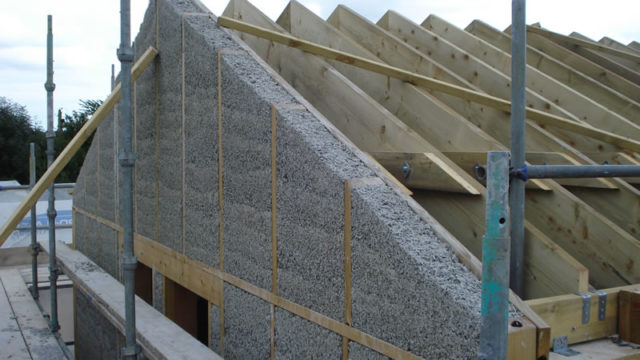 Due to the complex of advantages, wood concrete is widely used in construction
Due to the complex of advantages, wood concrete is widely used in construction
Formation of wood concrete blocks
When the solution is ready, it is poured into a suitable container and now it must be used up within 15 minutes. To form and make wood concrete blocks with your own hands, a lot of methods have been invented - in production they are collapsible formwork for 6-12 blocks, and at home they are usually made one piece at a time in homemade stencils.
One of the manufacturing methods on video:
The wood concrete manufacturing technology provides for two molding options:
- Fast stripping - after the initial setting of the cement. In fact, this is a non-stop process - the formation of a block (filling the solution into a mold), pressing (or vibropressing), stripping and sending for drying. Together with the preparation of the solution, even one person can make 80-100 blocks per day. The advantage of the method is the speed of manufacturing new wood concrete blocks and the non-stop process.
- Stripping in a day - after pressing, the block is left in the mold for 24 hours, after which only stripping and drying is performed. Making wood concrete blocks with your own hands in this way can be even faster, but only if there is a sufficient number of forms in which wood concrete can be left overnight.The advantages of the method are the close to ideal shape of the block, which, after the concrete has set, does not have the possibility of even the slightest distortion.
The worse the geometry of the blocks, the thicker the cement joints between them will be, which form cold bridges. To reduce thermal conductivity, the blocks are given a zigzag shape, which breaks such a bridge, preventing direct heat outflow.
To form blocks, a special machine or stencils are used - all this equipment for wood concrete blocks can be made by hand.
Using the machine
Both devices can be used in any of the methods, but their machine is often made for quick demoulding, to increase the pace of production. Their indisputable advantage is block pressing on a vibrating table. The formation process itself is simple and the equipment can be trusted by workers with minimal training.
The work of the semiautomatic machine on the video:
- The finished mixture is poured into a measuring container (1), which is displaced on the guides (2), pouring the solution into the mold (3).
- The cover (5) of the press is installed on top of the solution (its height can be adjusted by pins (6) for people of different heights) and pressed down by the lever (7).
- After pressing down, the vibrating table (8) is switched on. It works for 20-30 seconds and turns off automatically (you can use the simplest time relay) - you cannot ram for longer, because then the cement will be shaken off to the bottom of the block.
- The lever leans back (9), the press cover is removed (10) and the mold rises up (11), for which the pedal is pressed.
The finished wood concrete block can be taken for drying (12). After 2-3 days, it will gain sufficient strength for transportation.
To use the stripping method, after a day, the mold is made collapsible and removable, and the top cover can be fixed in it with latches or in another convenient way. After tamping, the block is removed directly from the mold and sent for settling.
Arbolit using a stencil
There are two main types of molds used - in the form of a box without a bottom and top, as well as collapsible, in the form of two letters "G", which snap around the bottom to form a rigid box, covered with a lid. It, in turn, is also fixed with separate latches, which are cut into the side walls.
No matter which mold is used, the basic algorithm is as follows:
- The box is being prepared for filling the wood concrete mixture. The pass-through is placed on a hard surface (1) covered with cellophane (so that the block does not stick), the whole box is moistened from the inside.
- The first layer of the mixture is poured in, compacted, the second layer is added on top, if necessary the third and covered with a lid. On the through box (2) oppression lies (a weight or something suitable), at the collapsible upper part is fixed with latches (3).
- If you have a punch at hand, you can walk it over the lid, this will replace the vibrating table.
- Depending on the technology used, the formwork is removed or the mold is left to stand.
If the through box is quickly stripped, then it is it (4) that rises first, then the bending is removed and the cover is removed. The block is sent for drying along with the base on which it was formed.
Pros, cons and limitations of use
Arbolit has been used successfully in construction for a long time. During this time, all the advantages and disadvantages of the material, as well as ways of dealing with the latter, have been fully revealed. The only serious restriction on use is on the use of wood concrete in multi-storey construction - a house above three floors cannot be built from it.
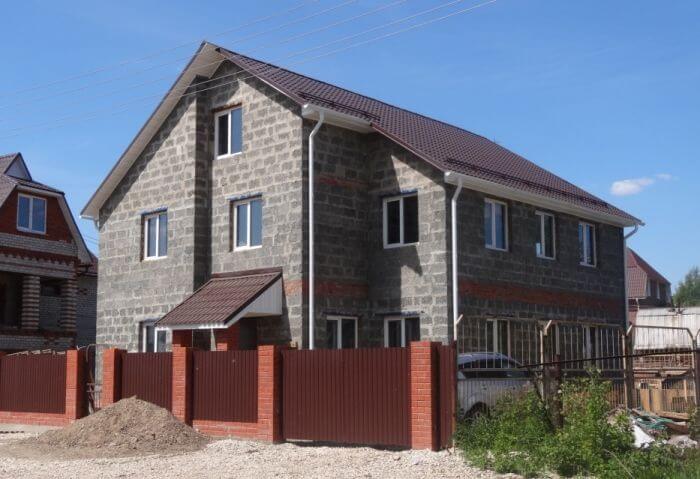
In other cases, the feasibility of its use is considered depending on the advantages and disadvantages of the material.
What is good about arbolite
This building material is quite simple to manufacture - it can even be done by hand, for which a simple concrete mixer is enough. In addition, there are enough other advantages:
- Good resistance to mechanical stress. At the same time, the block can be sawed with an ordinary hacksaw on wood to give the desired shape.
- Arbolite is a light material, so a strong foundation is not needed for a house built from it.
- Manufacturing technology makes the material unattractive to termites and similar insects, and also makes the walls resistant to fungi and mold.
- Arbolite blocks are larger and lighter than analogues made of cinder block, foam or aerated concrete. The dimensions allow to reduce the number of operations (brought-packed), which will accelerate the overall pace of construction. If the cinder block weighs 8 kg, then an equal-sized wood concrete material is about 4 - less effort will be spent on its transportation. At the same time, the strength of wood concrete is about the same.
- Arbolite walls lend themselves well to drilling - you can hammer in nails or tighten screws in them, where they hold like in wooden boards.
- Excellent insulating material - sometimes used as insulation.
- Arbolite does not burn. Prolonged exposure to high temperatures may begin to smolder, but little smoke is emitted.
- Unlike brittle concrete, arbolite blocks are capable of withstanding much higher tensile loads, therefore, cracks in the walls of this material can appear only as a result of a gross violation of construction technology.
- Arbolite does not contain harmful chemical compounds, which makes it an environmentally friendly material.
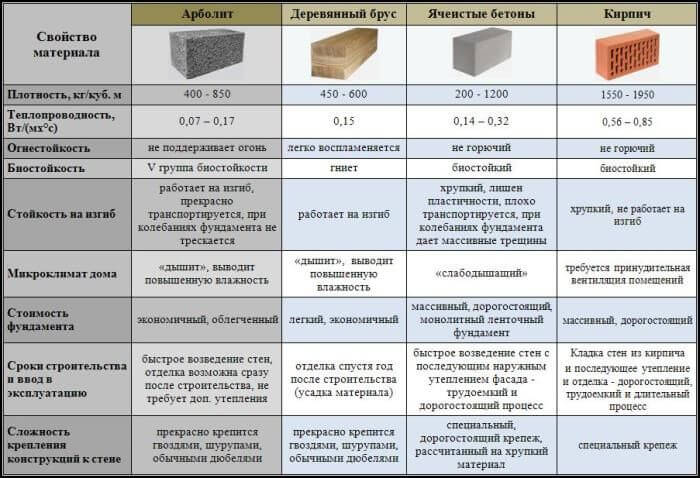
- The vapor permeability values of the material are similar to wooden products - the walls are "breathable" and do not need additional ventilation.
- Durability. According to technical characteristics, the frost resistance of wood concrete is up to 50 freezing cycles. If we take into account that freezing can damage only damp material, with proper and timely treatment of walls with plaster, their service life will be much more than 50 years.
Material disadvantages
The production technology implies a large amount of manual labor - for example, automation is not capable of stripping the formwork and is left to mix the components. The rest, if possible, is done in a semi-automatic mode, but if there are less than 3-4 people on the maintenance of the machine for the production of wood concrete, then the speed of work will drop significantly. Material for making itself inexpensive, but a significant part of the cost is the wages of workers.
Breathable walls at the same time imply a high level of hygroscopicity of the material. If the blocks are saturated with moisture, especially before freezing, then their service life will sharply decrease. Plastering walls allows you to cope with this problem.
In the autumn-winter period, the blocks stored in the warehouse cannot be covered with plaster, so they must be protected from getting wet.
One of the drawbacks of the material can be seen with the eyes - this is its appearance - it looks like chipboard, but the color is the same as that of a concrete coating. To solve this problem, the walls are plastered or covered with siding. Some manufacturers offer wood concrete with one side already plastered, but there is no particular sense in this, since it is still necessary to plaster the walls, at least to prevent them from getting wet.
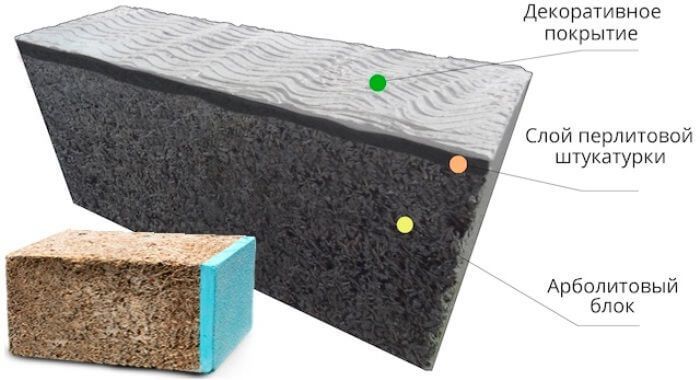
In artisanal conditions, which small manufacturers often sin, it is difficult to obtain the exact geometry of the blocks. This means that the seams between them will be thick, and this, in addition to the overconsumption of cement, also additional "cold bridges".
Recipe
A lot of recipes for making monolithic wood concrete with their own hands at home are practiced. In some recipes, timber is prepared and processed, in others, a chemical element is mixed. According to one of the methods, the crushed material is soaked in lime (80 kilograms of lime per 1 m3 of wood), then squeezed out. Then sprinkle on top with quicklime powdered lime (80 kilograms), stir, level, dry and add to the composition. Thus, they get rid of woody sucrose, which affects the quality of monolithic wood concrete.
Fiddling with crushed shredders, and even more so in such volumes, is a rather time-consuming task that requires space. In this regard, the use of calcium chloride or aluminum sulphate will become a quick way of making wood concrete. And then the crushed can not be processed, but it will be better if you let it lie outside, in the rain and sun for a couple of months. If possible, soak it in water, and dry it on the eve of preparing the solution. Soaking and curing is just a routine preparation of the wood pulp, allowing you to remove a little sugar.

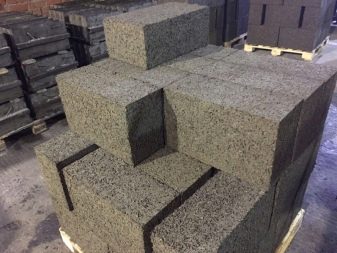
If, when adding calcium chloride, 5% of the total mass of the cementitious substance, a white salt coating appears on the hardened material (efflorescence, efflorescence), then the proportion of the content of the chemical element must be reduced. The exact ratio of the chemical component for monolithic wood concrete does not exist. It constantly needs to be installed independently in accordance with the quality of the cement and crushed used.
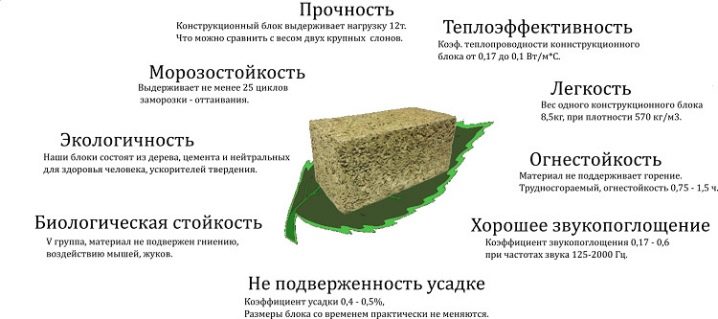
Someone does not want to mess with the selection of the ratio of calcium chloride. And, so that efflorescence does not appear, sodium silicate is mixed into the mixture. For example, 2% calcium chloride and 3% sodium silicate by weight of cement. But sodium silicate is quite expensive, in this regard, it is cheaper for most to carry out a couple of test batches and find out the ratio of calcium chloride. To give arbolite various additional properties, the use of slaked and quicklime, liquid glass, aluminum sulfate, calcium is practiced.
For the pros and cons of wood concrete, see the next video.
What it is?
Wood concrete is one of the varieties of lightweight concrete, the structure of which includes wood chips (shredded), high-quality cement, chemical additives and water. The need for chemical additives in the structure of wood concrete blocks is associated with the fact that in the organic component it is required to level the residual polysaccharide in order to increase the bond between crushed and cement, and also to further improve the characteristics of the finished building material, such as cellularity, forcing hardening, the ability to kill bacteria, etc. The economic effect of the use of this type of waste has been confirmed by leading companies in the production of wood concrete. A significant role in this issue is played by the rationalism of wood consumption.
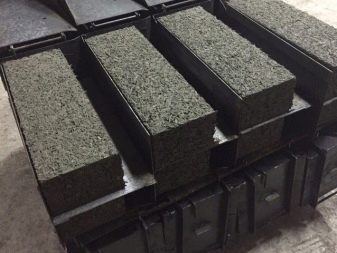

The main component for the production of wood concrete is waste wood from furniture and carpentry enterprises, from which crushed pieces of the required size are obtained. The technological characteristics of wood concrete depend on chemical additives. Along with calcium chloride, it maybe liquid glass, aluminum sulfate, hydrated lime, they make it possible to improve arboblocks and add additional characteristics to them.
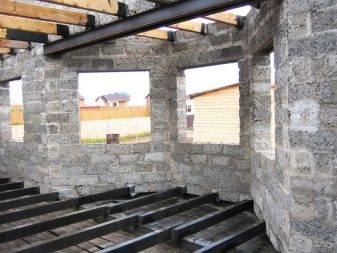
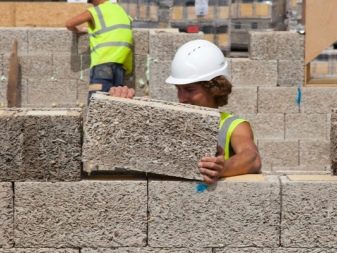
The technical parameters of wood concrete, in the structure of which there is an additive (chips from waste), are as follows.
- Average density. 400-850 kg / m3.
- Compression resistance. 0.5-1.0 MPa.
- Fracture resistance. 0.7-1.0 MPa.
- Thermal conductivity of wood concrete. 0.008-0.17 W / (m * s).
- Frost resistance. 25-50 cycles.
- Moisture absorption: 40-85%.
- Contraction. 0.4-0.5%.
- The degree of biostability. Group V.
- Refractoriness. 0.75-1.50 hours
- Sound absorption. 0.17-0.80 126-2000 Hz.
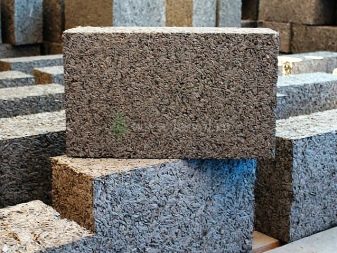
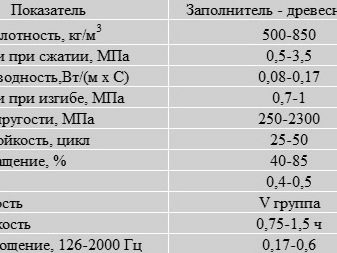
Material characteristic
There are several components in the composition of wood concrete blocks - this is the base, binders and additives to improve the quality of the material. The new composite material has the advantages of all its components, and also allows you to get rid of their disadvantages.
Blocky and monolithic material first appeared in the 1930s in Holland. In the next twenty years, wood concrete spread throughout Europe, America and ended up in the Soviet Union, where it was widely used in the construction and decoration of finished structures.
An industrial material consists of the following components:
- wood chips;
- cement;
- water;
- fillers.
The recipe for the blocks uses pine chips, woody stems, cotton or rice straw. Cement plays the role of the main binding component, the density and strength of wood concrete depends on it. Fillers are necessary to neutralize wood sugars, which provoke rotting and attract insects. Industrial mixtures use aluminum sulfate, calcium nitrate or water glass. Water dissolves all fillers and catalyzes the reaction of the cement. In production at special enterprises, 500 ml of liquid glass, 25 kg of cement, 40 liters of water and 130 liters of wood chips are used in the recipe.
This is useful: how to make wood concrete blocks with your own hands.
In this video you will learn how to knead wood concrete:
> Main Features:
- density - 600-800 kg per cubic meter;
- thermal conductivity - 0.10-0.17 W / (m * s);
- frost resistance - a wet cube can be frozen 30-50 times;
- water absorption - 50-85%;
- biostability - the fifth group;
- shrinkage - 0.5%;
- sound insulation - 0.15% of transmitted sounds up to 2000 Hz;
- fire resistance - 60-90 minutes before destruction in a flame.
In this video you will learn about the composition of wood concrete:
Characteristics of Tecolit wood concrete blocks
Environmentally friendly: Tecolit wood concrete blocks are made on the basis of environmentally friendly materials - 90% coniferous wood chips and 10% high-quality Portland cement with the addition of harmless mineral additives. Such blocks are absolutely safe for human health, they do not emit harmful substances, since they are based on natural materials - coniferous wood and stone.
Heat-saving: the new modified design of the blocks eliminates the appearance of cold bridges, now the blocks are joined with the overlap of the seam, no gaps are formed during the installation of Tecolit blocks, each joint is closed, and the expanded polystyrene insert prevents the penetration of cold, which creates heat accumulation inside the wall. The concrete heats up and retains heat for a long time, even when the heating is turned off, which creates significant savings.
Soundproofing: Tecolit fixed formwork blocks, thanks to their soundproofing properties, provide a high level of noise absorption inside the building. This allows the use of wall blocks for the construction of houses with high sound insulation requirements. The Tekolit block formwork is successfully used for the construction of noise protection screens along the railway lines, as well as along the highways.
Breathable: the porous structure of wood concrete provides natural circulation of water vapor, so that the house "breathes". The design of the blocks themselves does not interfere with air exchange, as a result, an optimal climate is formed in the room, which is facilitated by the internal balance of air humidity and temperature. In winter, Tecolite houses are warm, and in summer they are comfortable and cool.
Fireproof: Tecolit fixed formwork blocks are made of non-combustible material - wood concrete, which makes them fireproof, which is confirmed by many tests carried out. All Tecolit products comply with the requirements of GOST 30247.0-94 and GOST 30403-96 and have corresponding certificates. Permanent formwork Tecolit is one of the safest building technologies today.
Resistant to mold and mildew: Tecolit blocks, due to the content of mineral additives in their composition, do not absorb moisture, perfectly resist weathering and prevent dampness, mold and the development of fungal parasites on their surface.
Resistant to weathering: the material of Tecolit blocks - wood concrete has proven itself well in our harsh climate, it successfully resists frost, being a frost-resistant technology. Due to the special design of the blocks and the presence of a thermal insert made of expanded polystyrene, the wall made of fixed formwork keeps heat for a long time and does not let the cold into the room.Blocks do not get wet, do not absorb moisture, do not deteriorate under the influence of the environment.
Functional: the wide range of Tecolit wood concrete blocks allows for various architectural solutions. The technology of permanent formwork does not stand still, the new design of the corner blocks makes it even easier and faster to assemble the house. Blocks for external and internal walls and partitions, as well as blocks for noise barriers represent a wide range of configurations of Tecolit building technology blocks.
Easy to process: wood concrete is easily machined with a tool, it is easy to cut, drill, give it any shape, lay engineering communications through it. At the same time, wood concrete is a very durable material that can withstand high loads. The porous structure makes it easy to plaster blocks with any composition.
Durable: Tecolit building technology provides a rigid, monolithic structure for the walls of the house. In section, the wall is a monolithic concrete lattice, reinforced with reinforcing bars. The strength of houses built using Tecolit technology has been tested in practice in Europe. Buildings built more than 60 years ago have retained their original appearance and do not have any visible damage.
Economical: state-of-the-art Tecolit technology, thanks to the latest developments, is 20% cheaper than other related permanent form block construction technologies. Now building houses has become even easier and faster. Buildings built with Tecolit are economical to operate. Reduced maintenance and heating costs make Tecolit the best choice for material for the walls of the future home.


